#organic grains and oils
Explore tagged Tumblr posts
Text
best organic grocery online store near me
Are you looking for the best organic grocery online store near you? Explore a wide range of fresh and natural products delivered to your doorstep. These online stores make healthy living convenient and affordable, from farm-fresh produce to organic grains, oils, and spices. Enjoy eco-friendly packaging, quick delivery, and premium quality products tailored to your needs. Shop today and embrace a healthier lifestyle with organic groceries!
For More info: https://naturelandorganics.com/
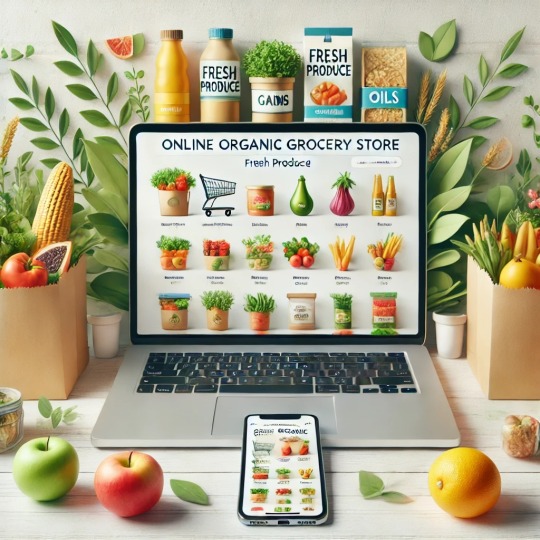
#organic grocery store#best organic grocery online#organic food delivery#buy organic produce#eco-friendly groceries#healthy living#organic grains and oils#online organic shopping#organic grocery near me
0 notes
Text
Foods You Can Eat Instead of Taking Vitamins and Supplements 🍎🥥🥦🥑🍌
Vitamin A: Carrots, sweet potatoes, spinach, kale.
B Vitamins: Whole grains, meat, eggs, nuts, legumes.
Vitamin B1 (Thiamine): Whole grains, legumes, nuts, pork, fortified cereals.
Vitamin B2 (Riboflavin): Dairy products, lean meats, almonds, leafy greens. Vitamin B3 (Niacin): Poultry, fish, nuts, legumes, whole grains.
Vitamin B5 (Pantothenic Acid): Meat, poultry, eggs, avocado, whole grains.
B6: Chicken, turkey, fish, bananas, chickpeas.
Folate (Vitamin B9): Leafy greens, legumes, citrus fruits, fortified grains.
Vitamin B12: Animal products (meat, fish, dairy), fortified plant-based foods.
Vitamin C: Citrus fruits, strawberries, bell peppers.
Vitamin D: Fatty fish (salmon, mackerel), fortified dairy products, sunlight.
Vitamin E: Sunflower seeds, almonds, vegetable oils, nuts, spinach, broccoli.
Vitamin F (Essential Fatty Acids): Fatty fish, flaxseeds, chia seeds, walnuts.
Vitamin H (Biotin): Eggs, nuts, sweet potatoes, salmon, avocado.
Vitamin K: Leafy greens (kale, spinach), broccoli, Brussels sprouts.
Vitamin K2: Fermented foods (natto, cheese), animal products, leafy greens.
Vitamin L1 (Anthranilic Acid): Cruciferous vegetables (cabbage, cauliflower), legumes.
Vitamin P (Bioflavonoids): Citrus fruits, berries, onions, green tea.
Vitamin Q (Ubiquinone): Fatty fish, organ meats, spinach, cauliflower.
Vitamin T (L-carnitine): Red meat, poultry, fish, dairy products.
Vitamin U (S-Methylmethionine): Cabbage, broccoli, Brussels sprouts.
Betaine: Beets, spinach, whole grains, seafood.
Boron: Fruits (apples, pears), legumes, nuts, avocado.
Calcium: Dairy products, leafy greens (kale, collard greens), almonds.
Carnosine: Beef, poultry, fish.
Carnitine: Red meat, dairy products, fish.
Catechins: Green tea, black tea, dark chocolate.
Choline: Eggs, liver, beef, broccoli, soybeans.
Creatine: Red meat, fish, poultry.
Chromium: Broccoli, whole grains, nuts, brewer's yeast.
Chondroitin: Cartilage-rich foods (bone broth, connective tissue of meat).
Copper: Shellfish, nuts, seeds, organ meats, lentils.
Coenzyme Q10 (CoQ10): Fatty fish, organ meats, nuts, soybean oil.
Ellagic Acid: Berries (strawberries, raspberries), pomegranates.
Glucosinolates: Cruciferous vegetables (cabbage, broccoli, cauliflower).
Glucosamine: Shellfish (shrimp, crab), bone broth, animal connective tissues.
Glutamine: Dairy products, meat, poultry, cabbage.
Inositol: Citrus fruits, beans, nuts, whole grains.
Iodine: Seafood, iodized salt, dairy products.
Iron: Red meat, poultry, beans, lentils, spinach.
L-Theanine: Mushrooms, black tea, white tea, guayusa.
Lignans: Flaxseeds, whole grains, cruciferous vegetables.
Lutein and Zeaxanthin: Leafy greens (spinach, kale), corn, eggs.
Lycopene: Tomatoes, watermelon, pink grapefruit.
Magnesium: Spinach, nuts, seeds, whole grains, beans.
Manganese: Nuts, seeds, whole grains, leafy greens, tea.
Melatonin: Cherries, grapes, tomatoes.
Omega-3 fatty acids: Flaxseeds, chia seeds, walnuts, fatty fish.
PABA (Para-Aminobenzoic Acid): Whole grains, eggs, organ meats.
Pantothenic Acid (Vitamin B5): Meat, poultry, fish, whole grains, avocado
Pectin: Apples, citrus fruits, berries, pears.
Phosphorus: Dairy products, meat, poultry, fish, nuts.
Prebiotics: Garlic, onions, leeks, asparagus, bananas (unripe), oats, apples, barley, flaxseeds, seaweed.
Probiotics: Yogurt, kefir, fermented foods (sauerkraut, kimchi).
Potassium: Bananas, oranges, potatoes, spinach, yogurt.
Polyphenols: Berries, dark chocolate, red wine, tea.
Quercetin: Apples, onions, berries, citrus fruits.
Resveratrol: Red grapes, red wine, berries, peanuts.
Rutin: Buckwheat, citrus fruits, figs, apples.
Selenium: Brazil nuts, seafood, poultry, eggs.
Silica: Whole grains, oats, brown rice, leafy greens.
Sulforaphane: Cruciferous vegetables (broccoli, Brussels sprouts), cabbage.
Taurine: Meat, seafood, dairy products.
Theanine: Green tea, black tea, certain mushrooms.
Tyrosine: Meat, fish, dairy products, nuts, seeds.
Vanadium: Mushrooms, shellfish, dill, parsley, black pepper.
Zeatin: Whole grains, legumes, nuts, seeds.
Zinc: Oysters, beef, poultry, beans, nuts, whole grains.
#women health#health and wellness#healthy diet#healthy living#healthy lifestyle#womens health#health#health tips#wellness#levelupjourney#dream girl guide#dream girl tips#dream girl journey#health is wealth#clean girl aesthetic#clean girl#it girl#nutrition#supplements#organic#food#nutrients#healthyhabits#healthy life tips#self love journey#self love#dream life#dream girl
2K notes
·
View notes
Text
High Maintenance 101
Prissy Girl Beauty Regimens 🎀
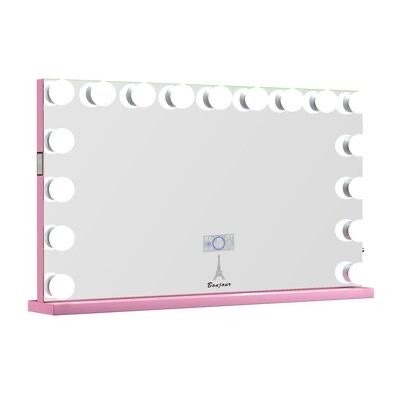

my prissy girl guide to beauty services and building a beauty lifestyle that fits you 💗
Skincare:
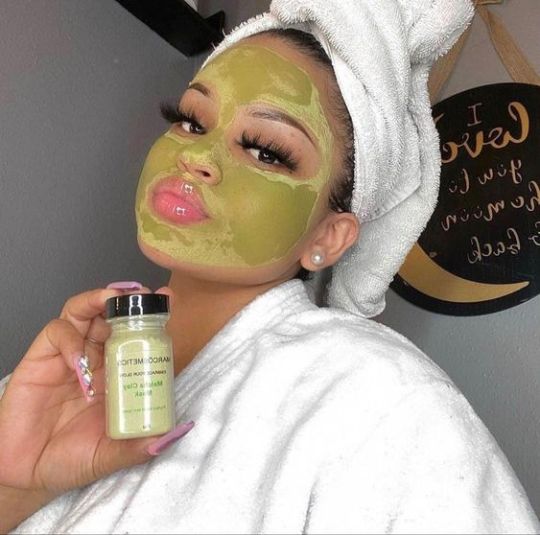
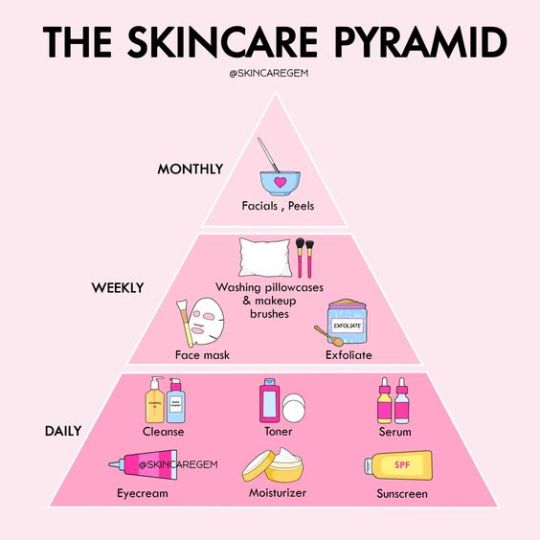
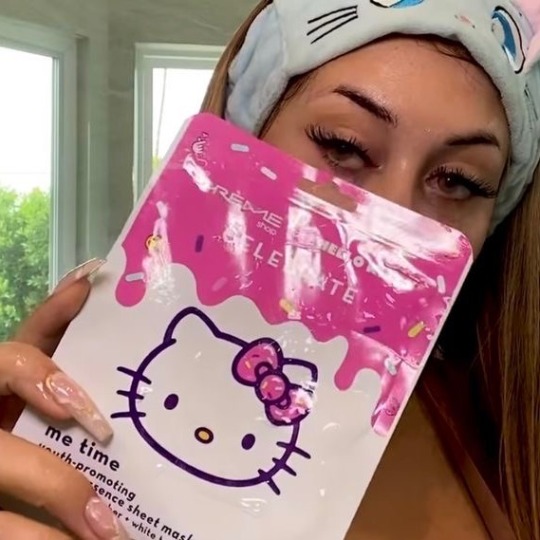
Essential Skincare Routine ❤︎︎
twice daily, in the morning and at night
daytime: gentle cleanser, toner, serum, eye cream, moisturizer, SPF
prep and protect skin
nighttime: double cleansing with oil and cleanser, exfoliation, treatments, moisturizer
wash away the day and help skin accept treatments and actives during your beauty sleep
products will change depending on skin type and goals, but sequence will more or less stay the same
Face Masks + Treatments ❤︎︎
Face Masks -
typically done at home 1-3x/week
clay, gel, mud, cream, liquid
my fav masks at home:
aha + bha liquid mask by the ordinary: a literal overhaul of my pores. it’s refining and helps reduce texture and hyperpigmentation. 1-2 x/week
korean modeling mask: i use this after doing everything in my routine. it’s super cooling and smooths my skin out. the low temp of the mask reduces flushing of my skin and helps the steps in my routine absorb better. 2-3 x/week
Treatments -
done either 1-3x/week and/or exclusively at night
consumer grade Retinols, AHAs, BHAs at high strength
little extra things i like to use to enhance my routine:
gua sha, ice pack, rose quartz roller, however often i choose
Facials ❤︎︎
done every 1-2 months by licensed estheticians
often includes exfoliation and extraction
Classic Facial: cleanse, extract, massage, moisturize
HydraFacials: extracts pores while infusing serums to boost skin’s vitamin and nutrient content
dry, dehydrated skin
Microdermabrasion: microabrasive tool removes outermost, textured, damaged layer of skin using suction to reveal a smooth and refined new layer of skin
sun damaged, aged, textured skin or skin with hyperpigmentation
Chemical Peel: application of medical grade AHA, BHA, Lactic Acid, Fruit Enzymes, or Retinol to peel away top layers of skin over the course of 1-2 weeks
pore refining, brightening, and anti-aging
after care is crucial. skin will be peeling and sensitivity to sun is increased. SPF MUST be used. it’s heavily advised that clients stay home for the first few days.
HydroJelly Facial: facial made of electrolytes, algae, organic white grain oat flour, rice flour, and white willow bark powder. leaving your skin hydrated, plump, and nourished. forms a vacuum-like seal that compresses facial contours.
there are 25 different hydrojelly pro masks for most skin concerns you may have, check here
More Facials ❤︎︎
Contouring Facial: sculpting, tightening, and lifting of facial muscles
LED Facial: uses LED light to soothe inflammation, aiding in acne healing and prevention
Vampire Facial: plumps skin and improves wrinkles by extracting blood, removing its platelets, then either re-injecting it into the skin or applying it topically
Diamond File Facial: finely ground diamonds resurface skin by filing to improve dark spots
Glass Skin Botox: multiple tiny botox injections just below the surface of the skin. alleviate fine lines, redness, texture, and more achieving glass skin
AquaGold Facial: microinjections that combine vampire facial methods, hyaluronic acid, botox, stem cells, antioxidants, vitamins, peptides, etc. improves fine lines, wrinkles, pores, pigmentation, acne scarring, dryness, tone, texture, skin elasticity, and more
cite
Hair:

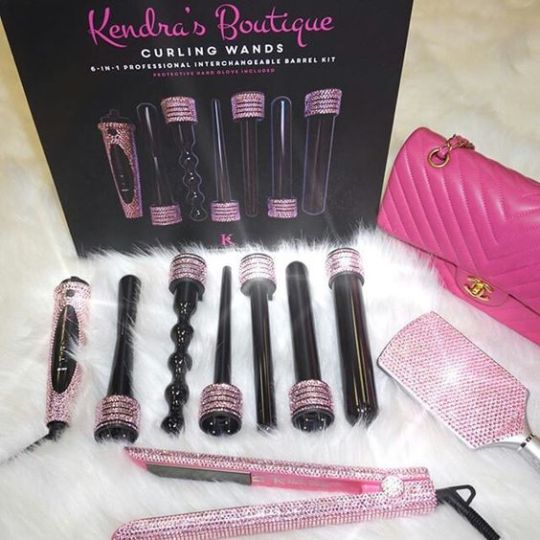
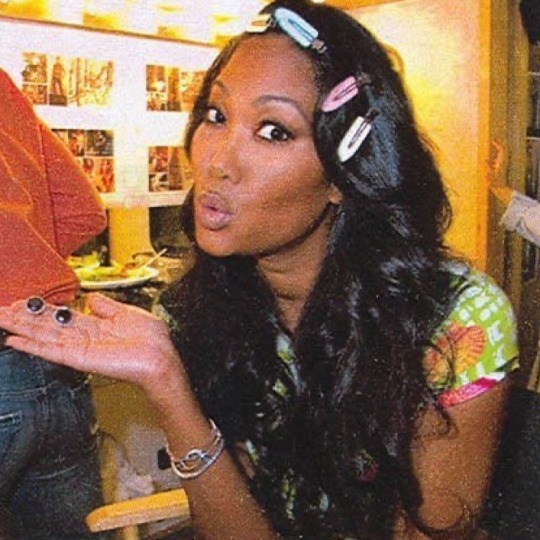
Hair Care ❤︎︎
Wash Routines:
curly textured: wash and condition every 2-3 weeks, deep condition every 1-2 weeks
straight: wash and condition every 2-3 days, deep condition every 2-3 weeks
Styling ︎❤︎︎
Hair should have a style everyday! At home hairstyling is limitless and really depends on your taste and lifestyle. The everyday woman does her own her once every 1-4 weeks using natural hair products, heat, or other tools.
Professional Stylists:
hair is styled every 1-3 months: uses heat to straighten or curl, extensions to lengthen and add volume, shears to maintain/attain a shape and length
trim ends: every 6-8 weeks
hair color: touched up roughly every 6-8 weeks (depending on how fast your hair is growing and how fast your color will fade)
Silk Press:
after a clarifying wash and deep conditioning, natural hair is straightened using flat iron and/or pressing comb, then usually curled in feathers or pin curls to preserve the style
lasts 3-4 weeks depending on maintenance
preserved by wrapping hair at night, keep hands out of hair, and using a wide toothed comb only
can be further styled with different kind of rollers, or with pin curls
Braids:
afrocentric hairstyles typically done to protect hair while maintaining beauty
lasts 3-8 weeks
styles include knotless braids, faux locs, stitch braids, french braids, etc
Extensions:
hair added to natural hair to enhance length or volume
can be done at home with patience and proper materials
sew-in extensions: (my personal fav) 1-2 months
your natural hair gets braided down flush to your scalp and the bundles are sewn on by the wefts in a flat pattern typically with a section of hair left out to cover the wefts $100-600
microlinks: up to 4 months
i-tip extension is added to hair using micropliers, clippers and loop tool. takes far longer than most extension methods but looks the absolute most natural $500-1000
tape-in extensions: up to a year, touch ups every 4-6 weeks
medical grade tape is used to attach extensions to small sections of hair $200-400
clip-in extensions: 3-6 months
extensions are clipped on by the wefts. the hair itself can last up to six months, but it’s not recommended to sleep, shower, or swim with the extensions in $50-100
Natural Styles:
all last roughly 1-2 weeks at most. allowing hair to completely DRY is crucial for these styles. your natural hair can be further changed in styles like buns, puffs, etc once dry
natural hair essentials: scalp oil, leave in conditioner, detangling brush, wide tooth comb, curling cream, styling gel, edge control and edge brush
wash n’ go
wash and detangle, then use leave in conditioner to keep hair moist. oil on the scalp and ends is recommended for growth and healthy ends
bantu knots
a traditionally african style where the hair is cleanly sectioned (usually parted in a cute pattern) and twisted into knots. style can be worn just like this or taken down for curls
braid/twist out
a specific pattern of curls is achieved after hair is twisted or braided with curl preserving products. end result depends on how big your twists or braids are
roller set
hair is sprayed with water and curl cream applied before roller of your choice is added. hair is left to dry usually overnight for springy well formed curls
Brows and Lashes:
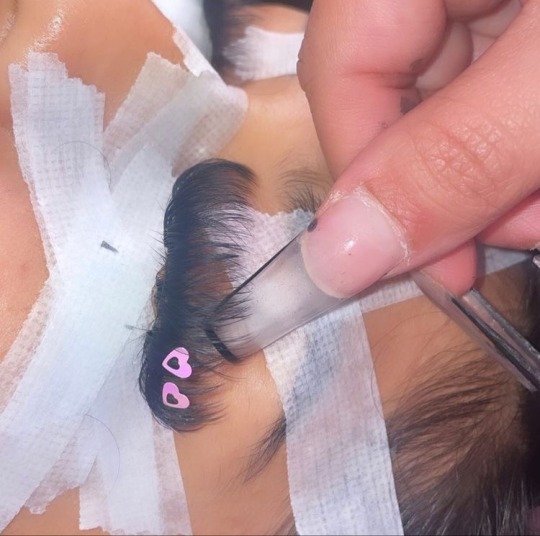
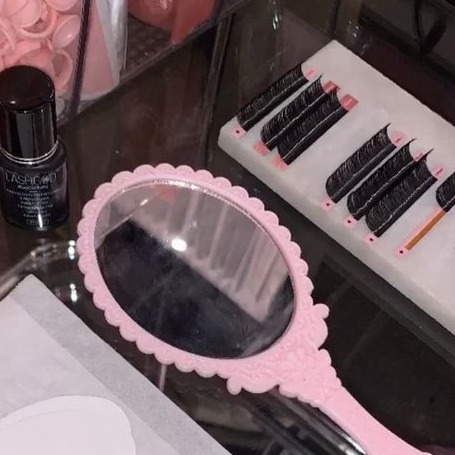

Brow Shaping ❤︎︎
in salon or at home
Waxing - every 3 weeks
Threading- every 2-3 weeks
Razor Shaping - weekly
Brow Enhancement ❤︎︎
Tinting - monthly
can be done at home or by pro in the salon
Microblading - every 1-3 years + annual touch ups, exclusively professional work
cosmetic tattooing using a manual tool with nearly invisible hair-like needles to inject pigment in brows to create your desired brow look
Lash Enhancements ❤︎︎
*done exclusively by professionals
Lifts - every 6 weeks
basically a perm for your lashes to curl them semi-permanently for lashes to appear longer
Lash Extensions - new set every 6-8 weeks, fill ins every 2-3 weeks depending on quality and style
false individual strands of lashes glued to natural lashes to create semi-permanent length and/or volume
lash baths: wet lashes and apply a small amount of gentle cleanser or a “lash bath” to lashes. cleanse lashes and eyelids for about 10 seconds. hold a towel under your eye and use a nozzle bottle to flush soap and bacteria from lashes then dry with a disposable lint free towel. finish by brushing your lashes with a spoolie. daily.
Lash Styles:
Classic: one lash on each fan, thin lashes
Volume: fluffier lashes with more lashes on each fan
Hybrid: uses classic and volume lashes to make an alternated look
Russian: volume lashes made with very thin individuals, 5-6 extensions per natural lash, fanned out look
DIY Lash Extensions - lasts about a week (sometimes longer)
lash fragments or individual wisps are glued either under the lashes or on the lash line. KISS Falscara is a product that makes this concept simple and easy
Nails:
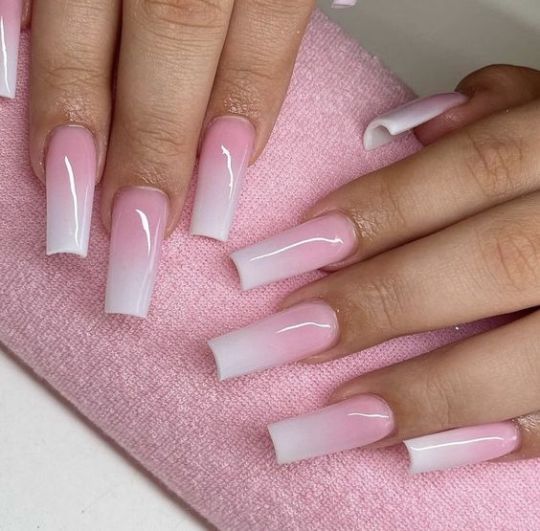
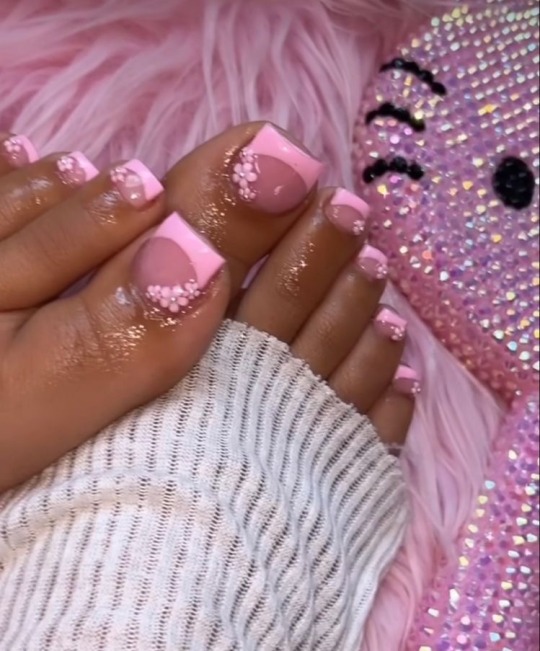
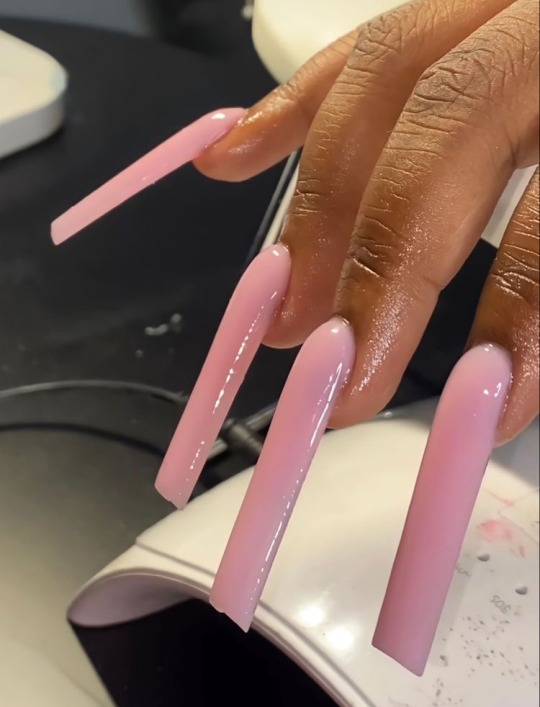
all these services can be done at home with the proper materials and KNOWLEDGE
Classic Manicure ❤︎︎
every 1-2 weeks
nail service that consists of soaking hands in warm soapy water then drying them. nails are trimmed, filed, and buffed. cuticles are pushed back before applying nail polish (base coat, color, top coat), then finally cuticle oil is applied.
nails can be enhanced with rhinestones, glitter, or charms and attached with uv gel or nail glue
my fav styles are pink, cream, white, black and any french tip using those colors
Pedicure ❤︎︎
every 2-4 weeks
sister to the classic manicure, but can be upgraded depending on materials. steps are similar to manicure, except feet are scrubbed and exfoliated before feet are washed and dried to apply nail color
regular polish, acrylic, or gel can be used on toenails
Gel or Shellac Mani ❤︎︎
every 2-3 weeks
same process as the classic manicure, but traditional nail polish is replaced with uv base coat, gel or CND Shellac polish, then uv top coat that’s cured in a UV or LED lamp
longer lasting and more strong/3d than classic mani and is typically removed by soaking in acetone
Apres Gel-X Nails ❤︎︎
every 2-3 weeks
my personal fav at home nails using the artme yoko matsuda nails. after doing a classic mani sans polish, you apply a dehydrator and primer to prep nail for gel. then you apply builder gel to your natural nail and cure. then you apply that same builder to the nail extension after etching it using an electric drill or acetone. marry the gel to your nail and cure. then just shape to your liking and top with uv top coat. tutorial here
Acrylic Nails ❤︎︎
every 2-3 weeks, nails are fully grown out after 6 weeks
manicure done with liquid monomer and acrylic powder to build and extend natural nail, then polished with color or just a top coat if desired
Russian Mani ❤︎︎
every 4-5 weeks
essentially a gel manicure, but more invasive. the eponychium is snipped away so polish can be applied more closely and flush to the cuticle. this aids in visuals and longevity
service is seen as risky because the skin is more susceptible to fungal or bacterial infection. this is actually how i do my nails at home.
Body:
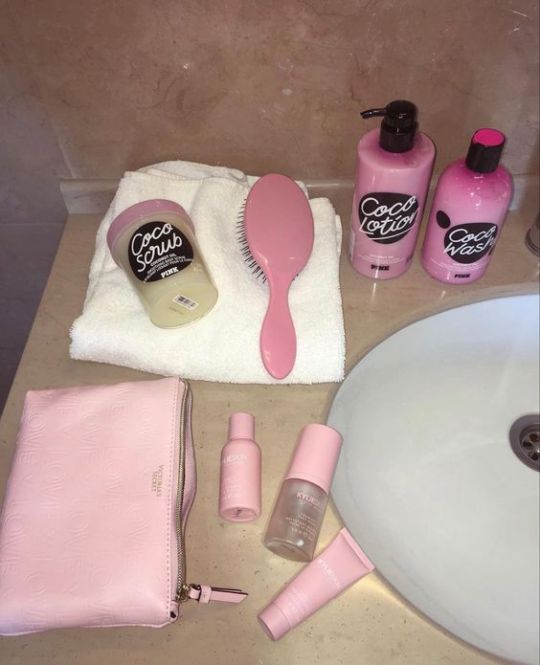

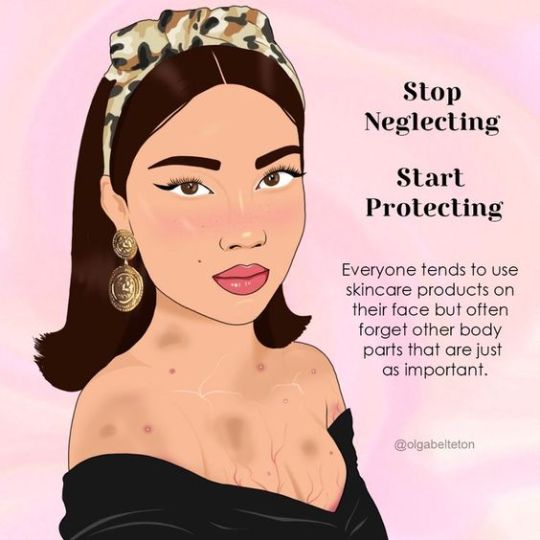
Bathing ❤︎︎
2x daily
self explanatory, we all know how to bathe. i have other posts that talk about my shower and bath routines.
use a gentle cleanser then a scented body wash to complement perfume and smell fresh all day.
if needed, you can use body soaps with actives like aha, bha or retinol to exfoliate or treat skin at night
exfoliation - 2-3x/week. using scrubs, loofahs, bath brushes, etc.
Hair Removal ❤︎︎
shaving - 2-3x/week
waxing - every 3-5 weeks
sugaring - monthly
ipl device - a device that uses light therapy to slowly destroy hair follicles and unwanted pigment in skin. i use mine after every 5-6 shaves but i could really use it more often.
Vajacial ❤︎︎
1-2x/month
a “facial” for your lady area
the esthetician will first wax, then cleanse and apply an enzyme exfoliant. then they extract any blackheads or ingrown hairs from the area before applying a soothing mask usually in the jelly form.
Moisture and Hydration ❤︎︎
body cream or lotion - daily right after bathing to hydrate skin
body oil - daily to seal in moisture and protect skin from debris and dryness
masks - weekly to address particular skin concerns
ex. when i was having eczema flare ups on my back, i used a dead sea mud mask every 1-2 weeks to help treat it
done at home or at spa
glycolic, clay, mud, salicylic, etc.
Enhancement Procedures:
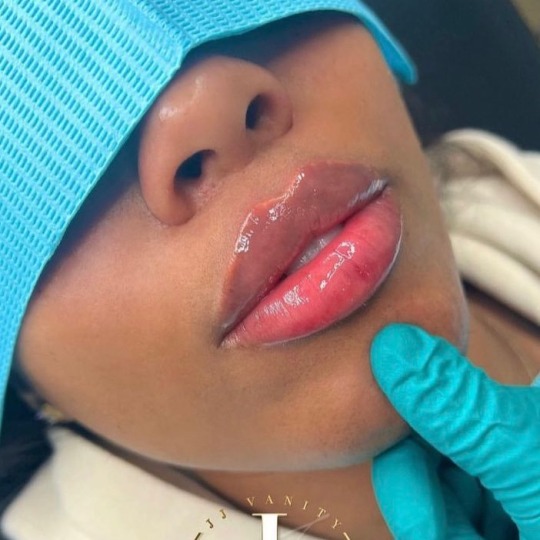

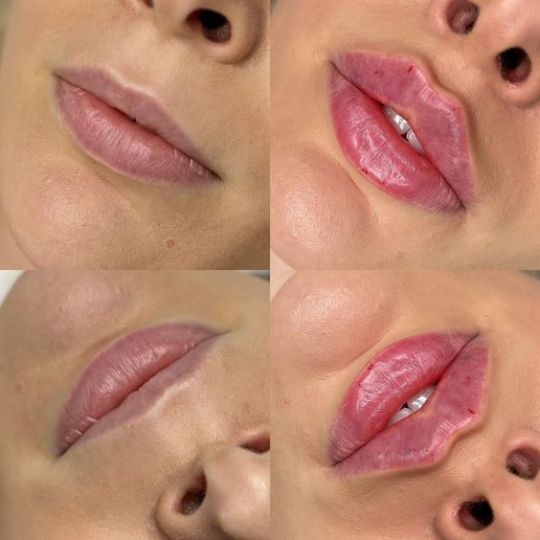
the goal is to look younger and balance facial features. all these services are exclusively done by professionals usually in a medspa and are widely considered luxury.
Botox ❤︎︎
every 6-8 months; between brows, smile lines, outer corners of eyes, etc
discourages muscle movement to reduce wrinkles
Lifts ❤︎︎
lasts about 10 years; face, neck, brow, eyelids
skin is lifted to desired look, then excess skin is removed
Fillers ︎❤︎︎
every 6-12 months; under-eye, lips, jawline, wrinkle sites, cheekbones
injects acids (usually naturally occurring) like Hyaluronic Acid and Calcium Hydroxylapatite to add volume to your face
Body Contouring ❤︎︎
every 2-4 months until desired results are achieved
non invasive liposuction to achieve desired physique
CoolSculpting - cryolipolysis freezes fat cells for the body to the metabolize and and remove them
SculpSure - essentially the same as CoolSculpting, but uses heat and laser technology to destroy fat cells
Laser Hair Removal ❤︎︎
every 5-6 weeks; bikini, underarms, legs, arms
touch ups done every 1-2 years
hair growth is inhibited by exposing follicles to light at frequencies that kill them
Building the Regimen 🗒️💕:



when making appointments with your “glam squad” you can stagger your services by week depending on what’s being done. for example you can get your mani and pedi done one week. then your facials, brows and lashes another week.
Things to Keep in Mind 💭💞:
these frequencies won’t be the same for everyone depending on personal wants, budgets, etc. but will most likely land somewhere in the ranges i gave. if you need touch ups or redos any sooner than i mapped out, then the service most likely was of poor quality.
anything done at home may or may not be up to the level of detail and longevity as salon or spa work. if you see yourself doing the majority of your beauty maintenance at home, this can save money but may end up taking more time than professional services. so it’s a give and take.
More Resources:
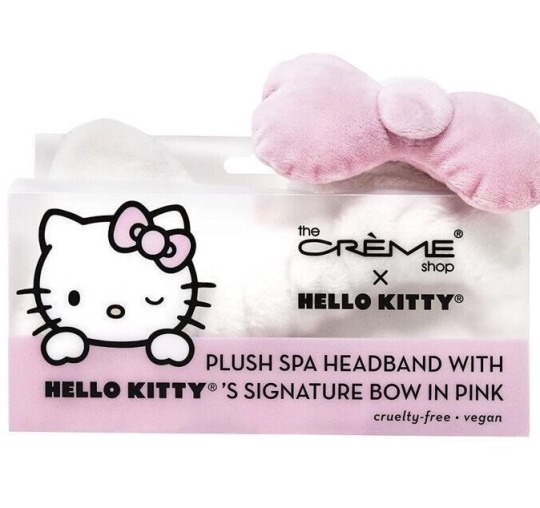

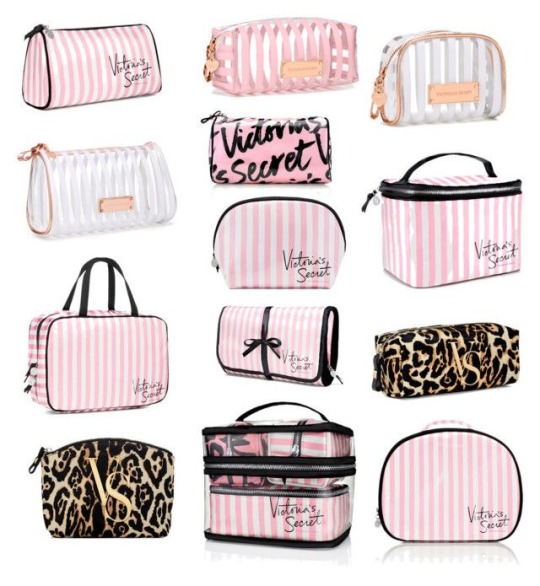
manage your routines, services and products using a beauty binder
a look at my skincare routine
at home beauty treatments for the summer
my hair care routine at home
pretty on purpose by @shefromhouston
monthly beauty routine by @angeljpg
dream girl routines by me
#the prissy girl agenda#dream girl journey#prissy lifestyle tips 💕🎀#dream girl routines#masterpost#my posts#skincare
2K notes
·
View notes
Text
40 sentences that will teach you more about nutrition than a $400,000 medical degree
From Brett Boettcher @brettboettcher1
40 sentences that will teach you more about nutrition than a $400,000 medical degree.
1) Meat, eggs and animal organs are the most nutrient dense foods on the planet.
2) Bone broth is loaded in collagen and helps repair the gut so you can heal from the inside out.
3) Saturated fat doesn’t cause heart disease, insulin resistance does.
4) Your ratio of triglycerides to HDL is a great indicator of mortality risk; the lower the better. ·
5) Protein is the most metabolically active macronutrient and it isn’t bad for your kidneys.
6) There isn’t quality evidence to show that dietary cholesterol impacts the cholesterol in your blood. ·
7) There is even less evidence to support that total cholesterol is bad for your health since it is inversely correlated to mortality risk. · 4h 8) Walking before and after meals is a great way to improve digestion and reduce blood sugar spikes.
9) Fiber is the last thing you need if you have IBS or diverticulitis.
10) Dairy is great for your health and its saturated fat intake is inversely correlated to heart disease.
11) Most nutritional recommendations were introduced based on profit margins, not health outcomes.
12) Calories in and calories out is all that matter, but some calories make you hungrier (sugar/grains). Other calories (protein) help you burn more calories.
13) Multi grain just means they took 2+ different terrible sources of grain and put them together into one product.
14) Cereal and bread for breakfast will spike your blood sugar and have you starving before lunch. Try Greek yogurt or eggs instead. ·
15) “Intuitive eating” and “listen to your body” makes no sense considering 88% of people are metabolically unhealthy and addicted to food. No one would say “intuitive crack use.”
16) Eating is a stress on your body; The less often you can eat, the healthier you’ll be.
17) Plan your meals around the protein source (with its natural fat) and add a small side of carbs if needed.
18) Eating for satiety is more important than relying constantly on willpower. Find filling foods and avoid foods with addictive properties (ultra-processed).
19) You don’t have to know how to cook. Grill a meat, sauté a green vegetable, bake a potato. Mix and match a million ways.
20) Eating many of the same foods every week isn’t perfectly optimal but it’s likely your best path to consistency and therefore success. ·
21) Becoming more insulin sensitive should be the focus of any health-related nutrition plan.
22) Salad dressings are one of the worst things you can eat for your health. High in calories and inflammatory industrial oils.
23) Eating 5x per day won’t boost your metabolism. If you are trying to gain weight, it’s an excellent strategy.
24) Bacon can be healthy, just avoid the processing with nitrates.
25) Cottage cheese and Greek yogurt are two of the best sources of protein per calorie.
26) Carbs are beneficial around a workout. But many sources of carbs are processed and easily overeaten. Focus on single ingredient foods.
27) You can’t be healthy at any size no matter what your mother or liberal arts professor said.
28) Eat a high protein meal before attending social events that are filled with junk food.
29) If eating out, order the food with the highest protein content.
30) The #1 reason people fail is that they don’t prepare. Meal prep, meal plan, have ready to eat protein sources. · 31) The food you eat directly impacts your mental health and processed foods are correlated with depression and mental illness.
32) Processed foods have been engineered to be as addicting as possible. Your taste buds can be retrained with natural sources.
33) “Plant-based” foods are made in laboratories and are an easy way to sell overpriced junk to consumers at high margin.
34) Eating 1 gram of protein per lb of ideal body weight daily will do more for your body composition than spending 30 minutes on the treadmill.
35) When in doubt, if it comes from the center aisles of the grocery store or has more than 3 ingredients, it’s not good for you.
36) Many foods labeled as “keto” “paleo” or “high protein” are far from meeting the intended definition.
37) Your gut is responsible for 70% of your immune system; feeding it sugar and other inflammatory foods is making you sick now and later.
38) Genetics play a role but over 90% of the country has a resting metabolism within 500 calories daily. Being fit is possible for everyone.
39) Flipping the food pyramid upside down is closer to healthy eating than the traditional suggestions.
40) Eliminating drinking your calories is the first change to make when trying to improve your health.
210 notes
·
View notes
Note
hello i love your word lists and i was wondering if i could request one specifically for baking! i need title inspo for a story i'm writing :)
Some Baking Vocabulary
Aeration - the treatment of batter or dough by charging with air to produce increase in volume
Ancient grains - all whole grains are considered ancient because we are able to trace their roots back to the beginning of time
Caramelization - cooking sugar until it’s brown or golden
Chocolate - from the Aztec word xocolatl, meaning "bitter water"; a food derived from the cacao bean fermented, dried, roasted, ground and processed into cocoa powder; a liquor used to make a variety of chocolate products
Citron - the sweetened rind of a fruit
Clarify - to make a substance clear or pure
Courverture chocolate - high quality chocolate used for tempering and glossy coating
Crescent rolls - crescent-shaped bread rolls having a flaky texture
Crushing - formation of dry crust on surface of doughs due to evaporation of water from the surface
Currant - the acidulous berry of a shrub, usually dried and dark in colour
Essences - aromatic compounds used for flavouring confectionery; can be natural or synthetic, or blends of both
Ganache - a rich, smooth mixture of chocolate and cream is used as a filling, frosting, or glaze
Genaese - fatless sponge cake used as base in decorated cakes
Glaze - coat a dessert with a liquid, like melted chocolate, mirror glaze, sugar glaze, etc.
Hearth bread - yeast bread baked in round, oval or free form on hot, flat baking surfaces in an oven
Liqueur - spirits sweetened with sugar and flavoured with essences, fruit juice, or essential oils
Macerate - to soak the fruit in liquid, often sugar or alcohol, to soften it and enhance its flavor
Marble - creating a swirl effect by incorporating two doughs or batters of different colors or flavors together
Mise en Place - a French term meaning “everything in its place,” referring to the preparation and organization of ingredients before baking
Molasses - light to dark brown syrup obtained in making cane sugar
Old dough - yeast dough that is overproofed; dough may have tripled in volume and fallen
Oven spring - the rapid rise of bread dough during the first few minutes of baking due to the expansion of gas bubbles; critical for achieving a good loaf volume and a light, airy crumb
Petit fours - small fancy cakes that can be placed in the mouth in one piece
Plaiting - the weaving of one or more ropes of dough into an ordered design
Ramekin - a small dish made of glass or ceramic that is used for serving baked goods like custards, cakes, souffles, and more
Sources: 1 2 3 4 5 ⚜ More: Word Lists
So glad to hear this, thank you! Hope this helps with your search. Would love to read your work if it does. Otherwise, you could go through the sources, perhaps I wasn't able to include the right word/phrase for you. Also have more food-related posts here :)
#baking#writing reference#terminology#writeblr#dark academia#spilled ink#literature#writers on tumblr#writing prompt#poets on tumblr#poetry#creative writing#writing inspiration#writing ideas#writing resources
146 notes
·
View notes
Text
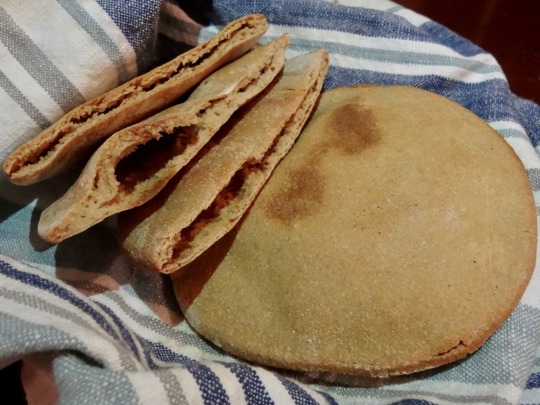

[ID: One puffy circle of bread, and three which have been halved to show an internal pocket, on a striped blue and white kitchen towel. End ID]
خبز الكماج / Khubiz al-kmaj (Palestinian flatbread)
Khubiz al-kmaj is a thin flatbread with an internal pocket. It is commonly eaten with breakfast to scoop up dips such as hummus, used to eat stews, served alongside main dishes, and used to make sandwiches and to wrap falafel. "خُبْز," pronounced "khubz" or (in Levantine varieties of Arabic) "khubiz," comes from the root خ ب ز (kh-b-z), which also produces the word "خَبَزَ" "khabaza" (Levantine: "خَبَز" "khabaz"), "to bake."
This bread is eaten across the Levant and in Greece, with slight differences in terminology and style. It is variously called "خُبْز العَرَبِيّ" (khubz al-'arabiyy; Arabian bread), "خُبْز "البَلَدِيّ (khubz al-baladiyy; bread from my country), or (occasionally) "خُبْز البيتة" or "البيتا" (khubz al-bita), a borrowing from "pita." ("Pita" itself is perhaps from Greek "πίτα" "pita," or the modern Hebrew "פיתה.") The bread is referred to as "khubiz al-kmaj" in Palestine, from the Turkic "kömeç" / كُمَجْ ("bread baked in ashes"). The collective term for the bread in general is كماج (kmāj); each individual piece of bread is referred to with the singulative "كماجة" (kmāja).
Today, kmaj is frequently made with white flour; some people add olive oil or milk powder to ensure a very soft dough. Leila el-Haddad writes that a more traditional method omits milk and uses whole white spring wheat, a whiteish wheat grain harvested in late spring and ground without removing the bran.
Since the late 20th century, many Palestinian households have used an electric cooker (طنجرة الكهرباء; ṭanjara al-kahrabā') to cook kmaj, placing one kmaja inside of the chamber and one on top and allowing both to bake at the same time. These aluminum and tin cookers, which were invented in Gaza and became popular there during the first intifada in the late 1980s, are designed to route electricity through a metal pipe or spiral wire on the underside of their lids, heating both the top and the inside of the cooker simultaneously.
The cookers' popularity can be attributed in part to a curfew that Israel imposed on Gazan refugee camps during the intifada, supposedly in an attempt to restrict the movements of resistance fighters. Refugees in the Jabalia camp in the north, for example, unable to afford home stoves, and without the necessary outdoor space to make familial clay ovens, would have to wait in line for hours every day to get bread from shared ovens, risking curfew violations; household electric cookers were far more convenient. The success of local industry and innovation in the form of Gazan-manufactured technology was also symbolically and strategically important during the first intifada, in which Palestinians employed strikes and boycotts (largely organized by women) of Israeli companies and goods as a strategy of resistance to occupation.
An electric cooker is still today considered a very important tool, as it spares families the need to purchase kmaj (the price of which was soaring compared to the cost of flour in the 2010s, and which was often of inferior quality compared to what could be made at home). They are frequently given as wedding or housewarming presents. Lack of access to electricity, though, imposes a limiting condition on the usage of these cookers, as Israel has for over a decade strangled the flow of power to Gaza: Abier Almasri wrote in 2017 that tasks such as cooking and laundry had to be rushed during the four or so hours a day when electricity was available. In this environment, electric cookers are useful in that they can prepare a lot of bread in a short period of time. Fathia Radwan said in 2022 that she would wake up early, after the nightly power outage, to prepare more than 100 loaves of bread at a time for her family of nine.
Today, the taxes that Israel levies on imports of raw materials into Gaza makes the cost of new electric cookers, which sometimes exceeds 120 shekels (37 USD), too expensive for some families to afford. The difficulty and expense of importing materials, and the impossibility of exporting goods to foreign markets with the advent of the 2007 siege, also limit the number of factories in Gaza that are able to manufacture these cooking pots. The aluminum industry, introduced to Gaza in the 1960s and once the basis of a manufacturing and economic renaissance in the region, deteriorated as a result of the siege, as factories were no longer able to export goods to the West Bank and were newly reliant on imports of raw materials from Egypt. Even parts to repair electric cookers are expensive, due to a tax levied on items judged by Israel to have a "dual," i.e. a possible civilian and military, use.
Still, repairman Iyad Faraj estimates that over half the homes in Gaza have and use an electric cooker, as maintaining, repairing, and operating one is cheaper than having a gas pipe installed (at 68 shekels, 20 USD) and purchasing gas. Electric pots thus stand in many homes as both a utilitarian item, and a symbol of Palestinian ingenuity and resistance to Israel's attempts at impoverishment and starvation.
Support Palestinian resistance by contributing to Palestine Action’s bail fund or to Palestine Legal’s defence fund, by attending court or making a sign to support the Elbit Eight, or by buying an e-sim for distribution in Gaza.
Ingredients:
500g (4 cups + 3 Tbsp) white whole wheat (spring) flour
1/2 Tbsp (5g) active dry yeast
1/2 Tbsp (6.25g) vegetarian granulated sugar
1/2 Tbsp (7.25g) kosher salt
About 2 1/4 cups (530mL) room-temperature water, divided
Olive oil
White whole wheat flour is flour that has a white color once ground, despite the fact that it includes both the bran and the germ of the wheatberry. It is milled from white spring wheat (so named because it is harvested in late spring).
You may instead mix white all-purpose flour and brown whole wheat flour in your desired proportion. Keep in mind that whole wheat flour will need more water and more kneading than white flour. If you’re using all white flour, you will need about 1 1/4 cup (300mL) water.
Instructions:
1. Mix flour, yeast, sugar, and salt in a large mixing bowl. Add water gradually until dry ingredients come together into a sticky dough.
2. Knead the dough on the countertop or in a wide, shallow bowl until smooth, about 5 minutes. (If using whole wheat or white whole wheat flour) continue incorporating water into the dough as you knead to maintain a tacky texture.
3. Fold the dough into a ball and return to the bowl, seam-side down. Pat the top of the dough with some olive oil, cover the bowl, and let rise for an hour.
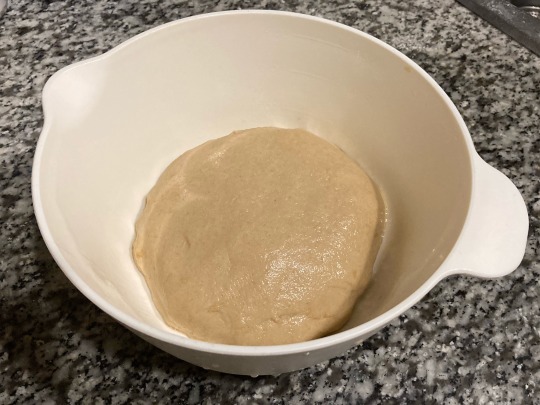
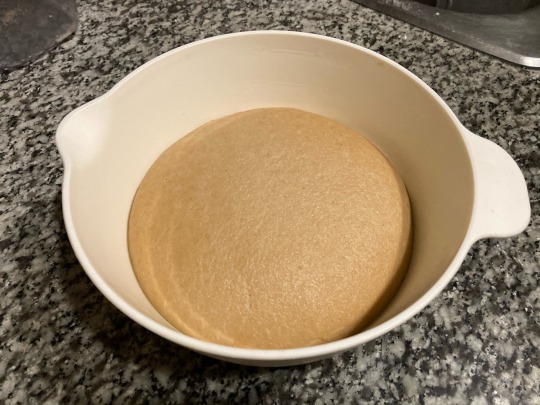
4. Pinch the dough into about 8 balls of equal size (about 110g each). Cover and let rest for 10 minutes.
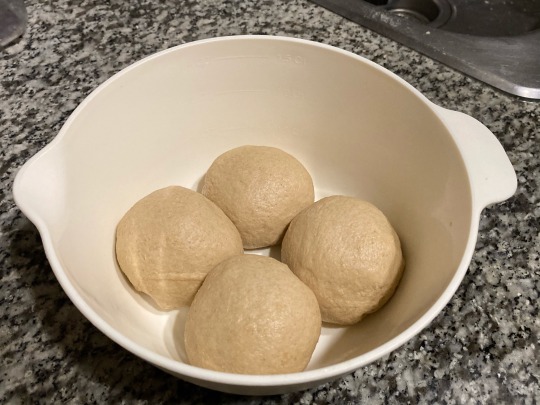
5. On a lightly floured surface, roll out each ball of dough into a circle about 1/4" (1/2cm) in thickness. Set dough circles on a surface prepared with parchment paper and cover closely with a kitchen towel or plastic wrap. Let rest and ferment for at least 1 and up to 10 hours.
An overnight rest is traditional in Palestine and will create a more complex flavor in the bread (see note below).
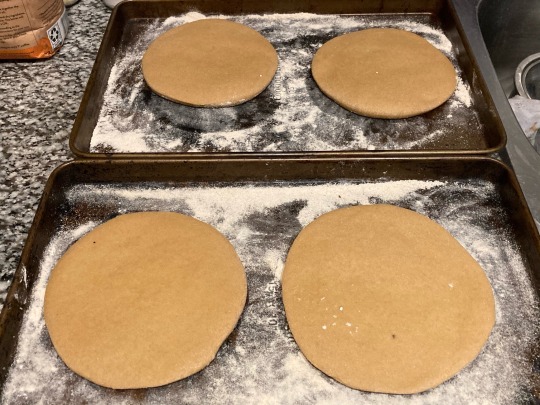
6. Remove each circle of dough from its resting place with a metal spatula and roll it out to a 1/4” thickness again. Preheat a baking stone or sheet in the top third of an oven at 500 °F (260 °C), and then cook breads in the oven for three minutes, until large bubbles have begun to form.
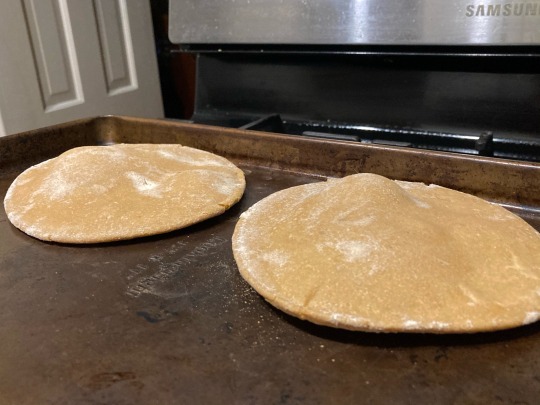
7. Flip bread over and cook for another 3 minutes on the other side, until golden brown and puffed up completely.
8. Wrap breads in a kitchen towel or tea towel and allow to steam for a few minutes while the others cook.
Notes
The climate where I live is dry enough that I have discovered a risk of my breads becoming crackers if I leave them out overnight. The dried-out flatbread does puff up in the oven, but the resulting product is not as nice and fluffy as it should be.
Through experimentation, I have found the best method of both preventing drying out and guaranteeing that the flatbreads will puff up during cooking the next day is:
1. Roll out the dough and place dough circles on a lightly oiled surface. Cover them closely with lightly oiled plastic wrap.
2. The next day, fold dough circles back into balls. Place seam-side down and roll out again on a lightly floured surface.
3. Bake as described above.
If you live in a humid environment, the first instructions given in the recipe above should work for you.
424 notes
·
View notes
Text
☀️🌷 Florida Water
I see a lot of witches, more so the new ones, get confused as to what Florida Water is and if it's water from the beaches of the state, Florida. I can assure you, you do not have to travel all the way to Florida and fight crocodiles to get some water.

What is Florida Water?
Florida Water came into the world in the start of the 19th century as a cologne for both women and men. It was a highly popular cologne in the late 19th century for it's rich and strong smell. It has a light flora scent with citrus overtones.
It became synonymes with spirituality when African-Americans in the Hoodoo sphere used it as a powerful spiritual cleanser, and because of it's pleasant smell, was also associated with appeasing the dead.
Generally, Florida Water is a spiritual cleanser, protective agent, and draws in luck, fantastic energy, and happiness.
Why is it called Florida Water?
Well, the word "Florida" is actually a Spanish word. Which roughly translates* to "Flower" or "Abundance of flowers" or "Flowery". Another way of saying Florida Water, in Spanish, is "Agua de flores".
How Do you make Florida Water?
Florida Water is still sold commercially with it's original formula from the 19th century, however, you can still make your own Florida Water at home. Recipes often change but have similar overlaps. Here's some ingredients to consider when making it, there's no need to use all of them, but it's always good to use most.
Citrus fruits -- Lemon, orange, grapefruit, lime.
Herbs and Flowers -- Rose, lavender, rosemary, mint, calendula, sage, thyme, jasmine, bergamot, violet, chamomile, basil. lemon balm, eucalyptus.
Spices -- Cloves, cinnamon sticks, allspice berries, anise.
An alcohol like Vodka** and distilled water.
Place ingredients into a large jar with a tight lid. Fill it half with vodka and then half with distilled water. Let it sit in a dark place, shaking it often, for at least 2 weeks to up to a month (you could make it during the new moon and complete it during the full moon). Then strain it using a sive and cloth and place into an airtight bottle.
The mixture should last you 6 months, keep out of direct sunlight, it's a good idea to write down when you made it and what ingredients it contains on a piece of paper and stick it to bottom of the bottle.
You may add essential oils to it as well or only use essential oils of the ingredients. You may also use fresh or dried ingredients. I prefer fresh. I also recommend using organic, so make sure your roses are not sprayed with pesticides and such.
Where do I use it?
Cleansing a space, yourself as a bodyspray, in rituals, to cleanse objects and charge them, offerings, warding off bad luck, to a bath, to be rid of bugs, your laundry, floor wash, to shine your iron tools, etc. Get creative!

(* Please note, Spanish is not my native language nor a language I study, takes these translations with a grain of salt.)
(** You may use grain alcohol as well, but do not use common household alcohol.)
My personal mix includes lemon, orange, lime, rose petals, mint leaves, rosemary, lavender, thyme, cinnamon sticks, garden sage, and mugwort. As well as vodka and distilled water.
#my spells#spellwork#witchcraft#herbs#witch#magick#spells#florida water#magical waters#spell ingredients#witchblr#witches of tumblr#cleansing#spiritual cleansing
87 notes
·
View notes
Note
I didn't know norway has interacted with HRE, could you tell us more about that?👁️
Of course!! Don't mind the essay below ✨

A direct relationship between Norway and HRE is difficult to find due to many reasons. One reason is that while HRE existed (962-1806) Norway was for the most part bound to Denmark and becomes non-existent in international relations. Another reason is the way that HRE was organized made it difficult to have a linear and stable relation. We mainly see potential interactions between HRE and Norway in two different ways: the Hanseatic league, and through wars and treaties.
The Hanseatic league.
The Hanseatic League was a guild of German tradesmen founded in the early 1100s, growing into a large organization for all German tradesmen by 1282. The guild was a result of common interests in trade and a need to protection; a network of alliances. They were essentially tradesmen based in the German area (HRE at the time) who banded together to make more profit in other cities and nations. Some foreign cities even getting their own areas where the German tradesmen lived and functioned as they would have under German rule. Bergen is a great example of this, and was the only Norwegian city included in the Hanseatic League trading network with an office, where still today there are areas referred to as the German dock. The League had their own laws and rules their members had to align with and had its high point from the 1300s to the middle of the 1400s.
The Hanseatic League founded the German office in Bergen at a time the Norwegian nation was weakened by the Black Plague. The access to grain from the Baltics was important for Norwegians and in Bergen the Germans got access to dried fish that came south from Northern Norway as well as fish oil, beer, iron, and certain fabrics. From around 1560, however, the Hanseatic League’s power in Bergen diminished as the Norwegian townspeople got a stronger trading position. Still, the Hanseatic League dominated the trade in Bergen until the middle of the 1700s. The Hanseatic office in Bergen was one of the last sold in 1754. The German population living in Bergen interacted with the locals through cooperation, competition, and conflict and had a great influence on the city.
The Hanseatic League was a major force in Northern Europe during the middle ages and more or less controlled all trade in the North, stretching from the Baltics to England. Middle Low German dominated the trading sphere and such has had a great influence of the Norwegian language and terms connected to trade. The Hanseatic League also made it easier for Norwegians to get access to continental goods and a more steady access to grain.
Wars and Treaties.
Firstly, there’s the German-Danish War of 974, where Norway fought along side Denmark against HRE. This is perhaps the only time we see a direct interaction between the nation Norway and HRE. HRE wanted to crush the Danish rebellion and prevent Viking raids further south. Denmark and Norway moved into German territory to ransack, and the first battle ended with a surprising Danish victory. After this battle, Norway returned home. A year later, HRE attacked again and this time they were successful, bringing the war into Denmark and even claiming Danish territory. The wat was a Danish loss.
Then we have the Treaty of Speyer in 1544 where the HRE Emperor recognised Christian III as the rightful king of Denmark and Norway and fully supported him against his rivals (just so far as to not aid them). In return Denmark-Norway would become pro-Hapsburg and respect the rights of the Teutonic Order, as they had had some disagreements over land previously.
Then there was the Danish-Norwegian involvement in the Thrity Years’ War (1618-1648) started in 1625. The war was in large related to a religious conflict within the borders of the HRE, and a want for European dominance between the Hapsburgs (Spain and Austria) and the House of Bourbon (France). The possibility to gain territories and seeing the war as a threat towards protestantism was what prompted Denmark-Norway to enter the war. Denmark was already present in German area due to trade and control of rivers leading into the sea around Denmark. The Danish intervention was financed by the Dutch and the English against HRE. The following battles were a massive failure for Denmark.
The Danish-Norwegian participation in the Thirty Years’ War ended with the treaty of Lübeck, signed in 1629, between HRE and Denmark-Norway. After the treaty, Denmark-Norway contributed to the war on HRE’s side and had to relinquish some territories. HRE and Denmark-Norway also ended up on the same side in the Franco-Dutch War (1672-1678), fighting against France, though they were both occupied in different areas of the war and never fought together.
HRE and Denmark-Norway were on opposing side in the Napoleonic Wars (1803-1814), which led to the dissolution of HRE in 1806) and a cede of Norway to Sweden in 1814, but never engaged in any battles against each other.
Summary.
The most extensive and influential interaction between Norway and HRE was within trade and contact through the Hanseatic League, with extensive cultural exchanges affecting language and norms and even local Norwegian politics.
They rarely dealt with each other directly in wars and treaties as the treaties were mainly organized by Denmark and to avoid fighting each other in the wars. The one time Norway as an independent nation fought against HRE in battle, Norway won. And Denmark lost.
#hetalia#historical hetalia#aph norway#aph hre#hws norway#hws hre#aph holy roman empire#hws holy roman empire#thanks for the ask!! 💖💖 I have been in a historical mood lately and finally got around to it#there is also a hanseatic museum in Bergen - can't remember if I've been there or not#but I've been to other museums there and they really emphasises the importance of the Hanseatic League and its presence in the city#also wanted to re-use Norway's middle ages clothes from my last post 🙏 it's about the same time period sooo
64 notes
·
View notes
Note
What sort of treatment would you give a steel type pokemon at the shelter if one was brought in with chronic rusting issues? Purely out of curiosity, don't see too many discussions about steel type care on the blog and I think they're underrated.
great question! we don't see a ton of steel types at the shelter, but i'm currently working towards my steel type handling certification, so i've been reading a lot of recent literature on steel type care haha. the answer is that it really depends on the pokemon and what's causing the rusting issues.
in the vast majority of chronic rusting issues in pokemon with metallic components to their body, the cause lies with husbandry. poor diet is the most common culprit. steel types in the wild eat a much wider variety of metals than initially believed, and in fact- much like a gogoat- many obtain trace metal and mineral content by eating dirt/rocks outside of their main diet! fixing dietary imbalances results in the rusting clearing out over time in most cases.
sometimes chronic rusting can also be caused by failure to provide proper avenues for self-maintenance. for example, aggron are known to "polish" their metal by rolling in sand or coarse-grained dirt and rubbing up against oily plants. in these cases, providing opportunities for those natural maintenance behaviors will typically resolve the problem. some older steel types may need their trainer's assistance with polishing if they've developed mobility issues.
outside of those possibilities, it's a veterinary issue. those are tough to resolve in steel types. if it's because of a mechanical problem (such as a klinklang's gears not turning properly), it can sometimes be fixed, but otherwise the usual response is to treat the symptoms rather than cure the underlying cause. we just don't always have enough knowledge of care for some of the less organic steel types to know how to provide for their medical needs. treatment for chronic rust usually involves regular polishing with medical grade steel wool (which has been properly sanitized) and the application of some type of oil blend to help form a protective coat. custom-made raincoats to help prevent exposure to moisture as well as using a dehumidifier in spaces the pokemon frequents can also lower the risk of new rust forming.
68 notes
·
View notes
Text
Healthy Skin
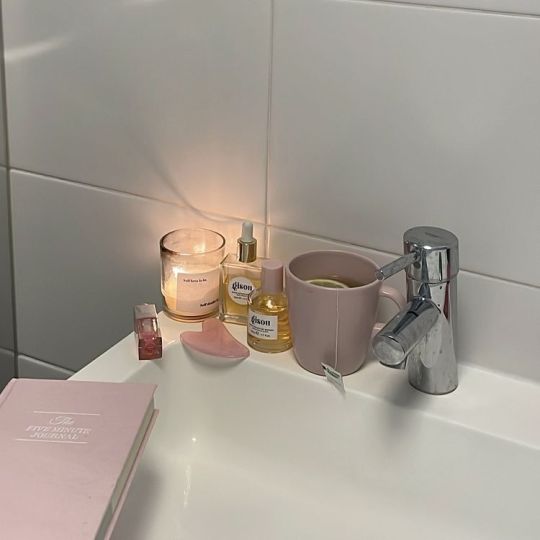

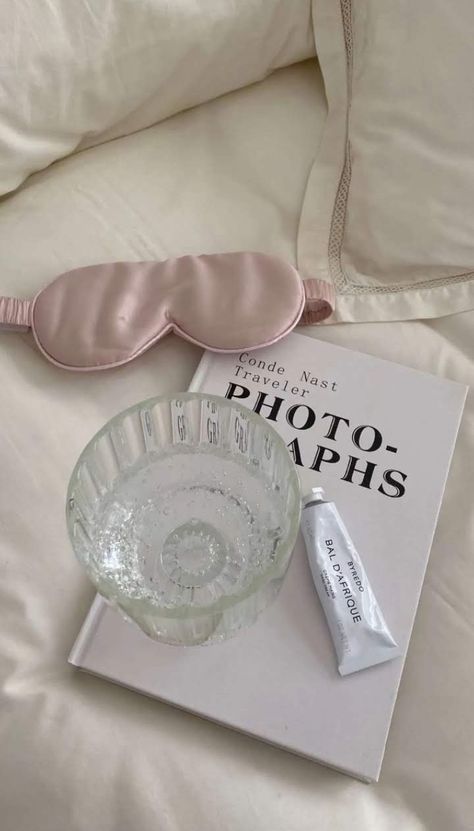
Cleansing and Moisturizing
Have short showers in warm water. Avoid long showers with hot water because it can strips helpful and necessary oils from your skin.
Wash your face twice daily. You should wash your face in the morning when you get up, and in the evening before going to bed.
Pat your skin dry. Instead of rubbing dry with a towel, gently pat your skin with a towel and let the remaining moisture air dry. This applies to both the skin on your face and on your body.
Exfoliate once or twice a week.
Remove your makeup before going to sleep. This will prevent breakouts.
Clean your makeup brushes regularly. This will prevent the build-up and spread of acne-causing bacteria.
Avoid touching your face as much as possible.
Healhy Diet
Fruits and vegetables. They are great for your skin and you body, since they are full of vitamins and antioxidants.
Food rich in omega. Fats are necessary for healthy skin, especially omega-3 and omega-6 fatty acids. Good sources of omega include: walnuts, olive and canola oil, flaxseeds, sardines, mackerel and salmon.
Food rich in antioxidants and selenium. they prevent damage done by free radicals, which contribute to wrinkles, tissue damage, and dry skin. Foods high in antioxidants include: whole grains, berries, apricots, beets, squash and sweet potatoes, tangerines, beans, and olive oil. While foods that contain selenium include: whole-wheat pasta, button mushrooms, beef and turkey, oysters, shrimp and crab, snapper and cod, and some other fish.
Food rich in coenzyme Q10. Coenzyme Q10 is an antioxidant that be found in: whole grains, fish, organ meats, and soybean, canola, and sesame oils.
Food rich in flavonoids. Flavonoids have both antioxidant and anti-inflammatory properties. It can be found in: dark chocolate and green tea.
Drink water. At least 2L daily.
Avoid added sugars. As well as processed or refined carbohydrates and unhealthy fats.
Lifestyle
Get 7 to 9 hours of sleep each night. Not getting enough sleep can make your skin appear dull and sallow. when we sleep, our bodies secrete certain growth hormones, and this leads to collagen production.
Reduce your stress levels. Yoga, meditation and breathing exercises can help you to relieve stress.
Exercise on a daily basis. Exercise increases blood flow to your skin and supplies it with oxygen and nutrients.
Protect your skin from the sun. A minimal amount of UV exposure is necessary for vitamin D production (20 minutes is enough for most people), but too much sun can damage your skin. Choose a sunscreen with a minimum of 15 SPF, wear it every day and avoid the sun between 10 am and 2 pm.
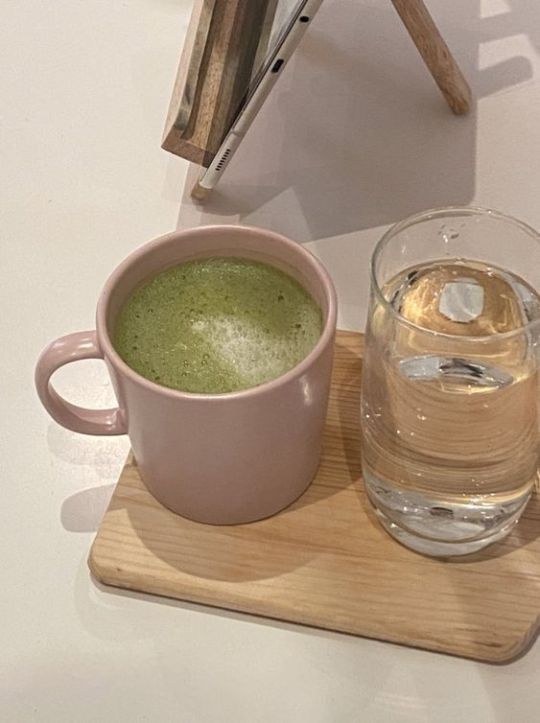
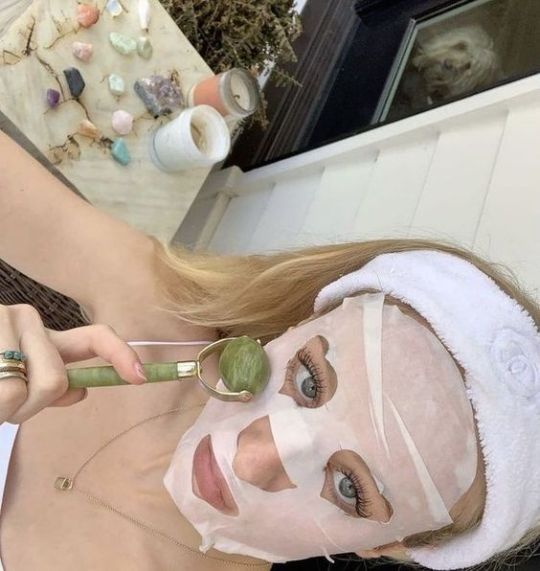
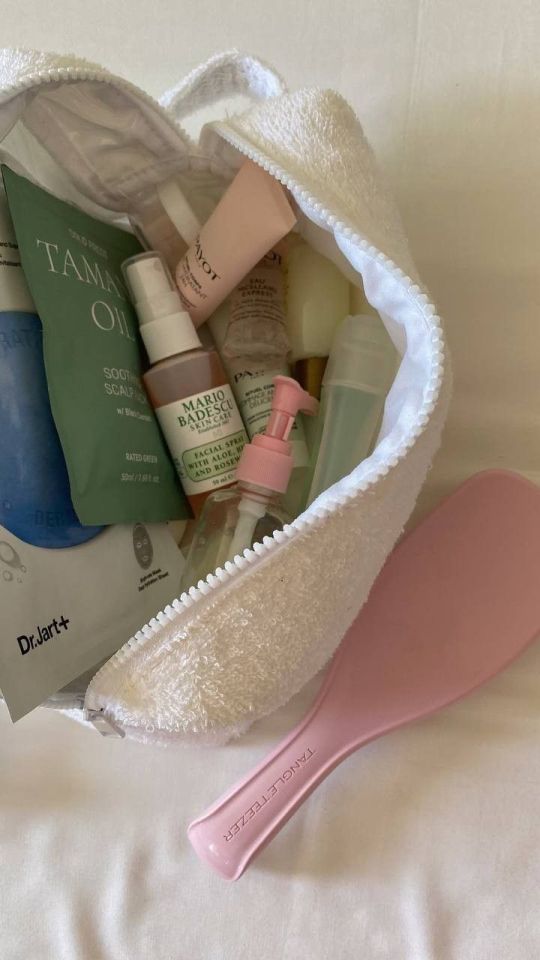
#coquette#pink pilates girl#hyper feminine#victoria secret angel#girly girl#self care#self improvement#self healing#self love#high maintenance#glow up#cinnamon girl#clean girl#dream girl#green juice girl#it girl#pinterest girl#that girl#pink blog#pink pilates princess#pinterest#aestethic#feminine#feminine energy#soft feminine#skincare#healthy
622 notes
·
View notes
Note
Hi! :D, i have 2 questions for karma, 1. Karma is tradicional vampire or is he like the Twilight vampires?. 2 He is willing to let me give him some kisses on his face and leave marks on him?. ;) PD(Sorry if i sound a bit rude, i am learning english and Google a helped me a litte haha)
Ooh! This was a question I've been waiting for!
Also your English is understandable relax bestie <3333
But first - let's get your smooching session out of the way ;)

Now, to answer your first question - Karma falls under the Twilight vampires; however he is not entirely a full vampire. In fact, his family and him fall under half-vampires.
Here is a basic (but LONG) comparison between half-breeds and pure-breeds!
Note that this is still in the works, so some information may be changed to fully tie in Karma's story and lineage!
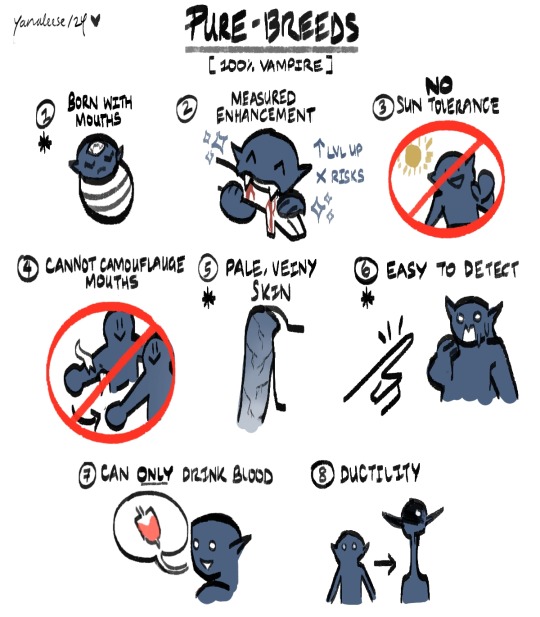
(1) Yup! You read that right - pure-bloods are born with extra mouths, or none at all. They can be randomly placed anywhere on the body e.g. their backs, their hands, etc. However over time, pure-bloods have been able to move their mouths towards different areas thanks to genetics!
(2) Measured Enhancement is a state that allows pure-bloods to renew their strength and abilities. The blood acts like a charger to your phone battery, similar to how we need food and water to survive. It poses little to no risks due to a chemical called vialene, which helps them to resist losing control of themselves.
(3) No Sun Tolerance - Just like traditional vampires, they cannot go in sunlight, as it can lead to their bodies to burn, decay or even explode. Although these effects are dependent on the pure-blood's age, genetics and their decomposition process.
(4) Due to most mouths being permanent from birth, they cannot camouflage their mouths nor make it disappear. As a result, it causes pure-bloods to be susceptible to their environment, leading to these extra mouths being infected. It also does not help the fact that these pure-bloods are decomposing bodies, since decomposed areas can leave the mouths no longer usable. Thus, many vampires wear long-sleeved clothing to hide these mouths - and over time - learn how to gain blood without being detected!
(5) 99% of the time pure-bloods have pale, veiny skin since they lack blood; but that doesn't mean they don't have any. In fact, the chemical that makes up their blood is called Pyrotoxinum (fire + poison). Pyrotoxinum is a black, poisonous chemical that is highly reactive with sunlight and human blood. It's composition is similar to blood, and it tastes like oil and grease. It is corrosive to skin after being exposed in sunlight, can be colorless in sunlight, and is odorless. Lastly, Pyrotoxinum is also poisonous when being ingested, making it a useful tool for humans and vampires to kill people in their sleep, and cause explosions to occur. So be extremely careful when coming across pure-bloods!
(6) With so many mouths, extremely pale skin, and no sun tolerance - pure-bloods are super easy to detect. Hence, many pure-bloods do not openly integrate themselves within human society. This means they use their environment particularly well, making them incredible predators.
(7) Unfortunately, pure-bloods can only drink blood. Eating meats, grains, and dairy is out of the question, since all human food comes from the sun. Besides, pure-bloods are not a fan of organ failure and dying an explosive death lol
(8) Ductility - Pure-bloods are able to stretch their body parts whenever their please, and return to their normal size. This ability works well for middle-aged vampires, since in their younger years - their body goes through puberty and other hormonal changes. Although, it appears in teens, it is recommended by older vampires to not dabble in this ability until they're older. They can receive training for it though!
Bonus: Short comparison between PURE-bloods and TRADITIONAL vampires
(B - Both , P - Purebloods , T - Traditional , TBD - To Be Decided)
Undead? - B
Fangs? - B
No reflection? - T
Superhuman Strength, Speed, Senses and Healing? - B
Hypnotic Eyes? - B
Shapeshifting? - B
Aversion to Holy Symbols? - T
Stake Thru the Heart? - B
Fire? - B
Invitation Needed to Enter? - TBD
Running Water? - If you mean washing your hands and rubbing your face, then T. But if it's exposed to sunlight e.g. rivers, pools? Then B.

(1) Hemomancy is the ability to control your blood in the form of weaponry, shielding, etc. This is because the human blood in their body serves as fuel for their vampiric blood. The vampire blood acts a conductor, allowing them to channel the life energy within themselves! It is by far the easiest, and notable ability that most half-vampires have.
(2) Frenzied Enhancement is an uncontrolled, bloodthirsty state that occurs immediately when drinking blood or seconds after drinking. Although it's risky, it helps half-breeds activate their strength and abilities (huge difference!!!). In simpler terms, drinking blood acts like a key to a closed treasure chest. Drinking blood is purely optional, and simply an additional tool for half-breeds to survive. However, due to vialene being reduced, half-bloods are unable to lower their adrenaline - causing a lack of self-control.
(3) Sun Tolerance - Compared to pure-bloods, most half-bloods are able to go in the sunlight without problems. Their human halves need sunlight, so having sun tolerance is a major plus!
(4) Stemming from genetics and adaptation, half-bloods have the ability to camouflage their mouths. They are able to move these mouths around, assimilate it into their skin, and in rare cases remove it from their skin completely! This process is similar to blood clotting, which is why their body is compatible with such major changes. This ability is by far one of the most envied by pure-bloods!
(5) Another trait that half-bloods can have are patchy, mosaic skin. This skin condition can come in the form of stitches, spots and spirals. Most of the vampiric race believes that this patchy skin substitutes extra body parts, e.g. the mouth. However, the reasoning behind it remains a mystery to most, since this condition has become rarer in the current generation of half-breeds (which Karma falls into).
(6) Since half-bloods are practically human, they are hard to detect appearance-wise. This doesn't stop modern methods from finding them through vialene tests, sensory overload, starvation, etc. Hence, many half-bloods try to build their endurance and stamina to remain undetected. Sometimes half-bloods even try to live off without vialene, which normally goes to shit if you're not careful. But it is possible - there's even a myth about it!
(7) Another ability that pure-bloods envy are half-bloods being able to eat human food and drink blood! Usually, many half-bloods have a strong preference of one over the other. Either way, half-bloods can live on a blood-only diet or a human-based diet. But it is strongly recommended by older generations to ingest both, since it can cause hormonal and emotional imbalances. So it's best to be on the safe side!
(8) Fixed shape - Fortunately, half-bloods are unable to twist and stretch their body parts. This is thanks to their human side kicking in, and hemoglobin being pumped around the body. Pyrotoxinum in most cases, is quite dormant. It is only activated when half-bloods use hemomancy, in fight/flight/freeze mode and possibly more!
Bonus: Short comparison between HALF-bloods and TWILIGHT vampires
(B - Both , H - Halfbloods , T - Twilight , TBD - To Be Decided)
Do they have sparkling skin in sunlight? - T
Superhuman Beauty - B, but it is not as potent as the Twilight vampires in my honest opinion.
Superhuman Strength, Speed, Senses, and Stamina? - B
Invulnerable? - T
Diamond-Hard Skin? - T. But I'd argue that falls under pure-bloods lol
Thirst for Blood? - T
Superficial Sleep? - T
No Religious Restrictions? - B
Enhanced Emotions? - TBD
Vulnerable to Fire? - T
Decapitation? - B
Bloodlust? - DEF B
Covens? - T. I wouldn't describe their family-like groups as covens, but as cliques? I don't have a full on name for it as yet...
Mate Bonds? - T
Transformation? - TBD, but I think transformation would be more suited to pure-bloods.
<>
If you're curious about anything stated here, feel free to blast my inbox (lol)!
Once again thank you for the amazing ask @mylovelyhorror ! I hope you all continue sending your asks - thirsty, unthirsty, romantic, or just pure fluff! MWAH 💋💋💋 trust me guys i'm not dead i swear
#karma#karma ask#karma lore#lc#qc#aleese comments#yandere#male yandere#yandere blog#yandere oc#yancore#yandere x reader#yandere x you#yan#yanblr#yan blog#yanderes#yandere tendencies#yande.re#yandere male#yandere boyfriend#yandere x darling#yandere boy#yandere community#yandere thoughts#yandere bf#tw yandere#soft yandere#yandere darling#yandere x male darling
62 notes
·
View notes
Text
A Recipe for Daropaka and a Korithian Meal

Hello everyone! (More than) A few days ago I said that, as a way to celebrate reaching 200 followers that I would make one of the dishes from the setting of my WIP. I did something similar for 100 followers which you can see here. This time around I put up a poll to see what dish you all would like to see based on the favorite dishes of my OCs. You voted for Otilia's favorite food, a cheesecake (Daropaka) from the land of Korithia.
However because I felt a bit bad about how long it took me to get to this and because I needed to make something for dinner anyway, I prepared an entire Korithian meal, specifically the last dinner Otilia ate before she left her homeland.
I will give a short description and some history for each component of the meal and will also provide recipes. These recipes come specifically from the Korithian city-state of Kalmanati.
BIG POST ALERT

The diet of Korithians is highly reliant on cereals, grapes, and olives. Barley is the most commonly consumed cereal and is used in the bread of most commoners. However, Kalmanati is famed for the quality of its wheat, and particularly among the wealthy, wheat is the cereal grain of choice. Legumes (Lentils, peas, vetch, beans, etc), vegetables (Cabbage, carrots, lettuce, seaweeds, artichokes, asparagus, onions, garlic, cucumber, beets, parsnips, etc.) and fruits/nuts (pomegranate, almond, fig, pear, plum, apple, dates, chestnuts, beechnuts, walnuts, rilogabo(Kishite regalu "Sunfruit"), bokigabo (Kishite botagalu "Northern fruit), etc.) also make up a significant portion of the Korithian diet, with meat (Cattle, lamb, pig, goat, goose, duck, horned-rabbit, game) and fish typically filling a relatively minor role except for in the diets of wealthy individuals (like Otilia).
Vinegar, oil, and garlic appear in almost all Korithian dishes and are an essential aspect of the Korithian palate.
Recipes below the cut!

The components of the meal are as follows:
Daropaka: (Korithian: Daro = cheese, paka = cake)
Karunbarono: (Korithian: Karun = meat, baro = fire (barono = roasted) )
Pasrosi Diki: (Korithian: Pasrosi = fish(es), Diki = small)
Psampisa : (Korithian: Psamsa = bread, episa = flat)
Akuraros : (Korithian: Akuraros = cucumber)
Ewisasi : (Korithian: Ewisasi = olives)
Funemikiwados: (Korithian: Funemiki = hill (mountain diminutive), wados = oil/sauce)
Wumos: (Korithian: Wumos = wine)
Daropaka aka Awaxpaka aka Korithian Cheesecake
Daropaka is a popular dessert in Korithia, however its origins predate Korithia by several thousand years.
The dish originates from a race of forestfolk living on the Minosa, known as the Awaxi. The Awaxi were a tall and powerful race, some rivaling even demigods in size. Aside from their size the Awaxi were also easily identifiable by the third eye which sat on their forehead and the porcupine like quills which grew from their shoulders, sometimes called the Awaxi mantle.
The Awaxi were a primarily pastoralist civilization, living in small semi-temporary communities where they raised cattle and goats. They are credited with inventing cheese.
The first humans that the Awaxi came into contact with were the Arkodians. The Arkodians introduced the Awaxi to metallurgy, and in exchange the Arkodians were given knowledge of the cheesemaking process. This early form of cheese was called darawa (Korithian: Daro) and was typically made from cow's milk and vinegar, the resulting cheese being soft and crumbly, similar to a ricotta.
Unfortunately peace would not last. The Awaxi settled disagreements and debates often through duels, rather than through war. While quite skilled duelists, their culture had no reference for strategy in battle and lacked the proper skills to fend off the organized assault from imperialistic Arkodians. The Awaxi were eventually driven to extinction, though they still appear as monsters in Korithian myth.
The Arkodians themselves would later fall, destroyed by the Kishites, however many of their recipes, including their recipe for cheesecake, would be passed down to their descendants, the Korithians.
Recipe
(Note that Korithia has no distinct set of measurements nor are recipes recorded. Recipes are typically passed down orally and differ greatly between regions and even families. Adjust ingredients to one's own liking) (Also note that this is not like a modern cheesecake, as it utilizes a ricotta like cheese the texture will not be as smooth and it doesn't use eggs as chickens have not yet been introduced to Korithia)
The Cheese
1/2 Gallon of Whole Cow or Goats Milk
1 Pinch of Sea Salt
2 Bay leaves
2 Tablespoons of White Vinegar
1 Large Ripe Pear
6 Tablespoons Honey
2 Tablespoons White Wheat Flour
1 Tablespoon Rilogabo Juice (substitute 1:1 Orange and Lemon juice)
The Crust
1 Cup White Wheat flour
Water, Warm
1 Pinch of Sea salt
The Topping
1 Sprig Rosemary
3 tablespoon honey
2 tablespoon rilogabo juice (see above)
1 Large pear (optional)
Fill a pot with milk. Stir in salt and add bay leaves. Heat over medium heat until milk registers around 190 F, do not allow to boil. Look for slight foaming on the surface, when the temperature has been reached, remove the bay leaves and add vinegar, the curds will begin to form immediately, stir to fully incorporate vinegar without breaking curds. Stop.
Take the pot off of the heat and cover, allow it to sit for 15 minutes.
Using cheesecloth, a fine mesh strainer or both, separate the curds from the whey. Allow the curds to cool and drain off excess liquid.
Preheat the oven to 410 F or 210 C. Grease the bottom and sides of an 8 inch cake pan with olive oil.
While cheese is draining, make the crust. Knead the white wheat flour with a pinch of salt and warm water for about 15-20 minutes, until obtaining a smooth consistency. Roll a thin circular sheet larger than the cake pan. Lay the dough inside, trim off any dough which hangs over the edge of the pan.
Skin and seed 1 large pear, using either a mortar and pestle or a food processor, break the pear down into a paste or puree, there should be no large visible chunks.
Combine drained cheese, 6 tbsp honey, pear puree, flour, and rilogabo juice. Using a food processor or other implement combine ingredients until a smooth texture is achieved. Taste and add honey accordingly
Pour the mixture into the pan, careful not to exceed the height of the crust. Top with a sprig of rosemary and place into the oven.
Cook for 25-30 minutes or until the filling has set and the surface is golden.
Make the topping by combining 3 tablespoons of honey and the remaining rilogabo juice.
Remove cake from the oven and pour the topping over the surface. Allow the cake to cool
Serve warm, cold, or room temperature with fresh fruit.
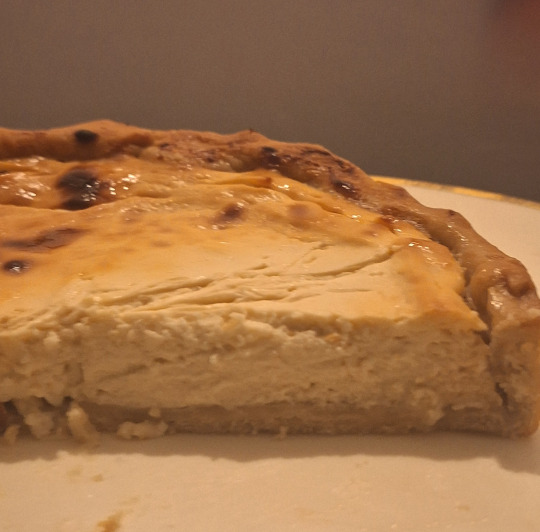
Karunbarono aka Roasted Meat
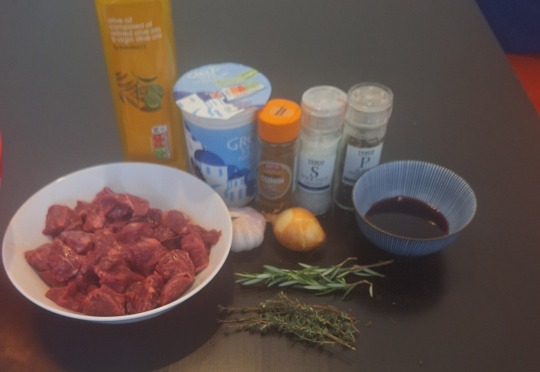
Cooking meat on skewers is a staple of Korithian cuisine, so much so that in certain regions the metal skewers or kartorosi, can be used as a form of currency. Meat is typically cooked over an open fire or on portable terracotta grills, though it is not unheard of to use a large beehive shaped oven or baros. The majority of the meat eaten by the lower classes comes in the form of small game such as rabbit or sausages made from the scraps of pork, beef, mutton, poultry, and even seafood left after the processing of more high-class cuts. The chicken has not yet been properly introduced to the islands, though some descendants of pre-Calamity chickens do exist, though they in most cases have drastically changed because of wild magic. Animals are rarely eaten young, lambs for example are almost never eaten as their potential for producing wool is too valuable. Most animals are allowed to age well past adulthood, except for in special circumstances. The practice of cooking meat in this style is prehistoric stretching back far before Korithia or Arkodai. What is newer however is the practice or marinading the meat before cooking it, this is a Korithian and later Kishite innovation.
Recipe
1 lb Mutton (meat used in this recipe), beef, lamb, venison, or horned-rabbit meat (in order to achieve this it is suggested to use wild hare meat in combination with pork fatback) chopped into bite sized pieces
4 Tablespoons Plain Greek Yogurt
4 Tablespoons Dry Red wine (Any dry red will work, for this recipe I used a Montepulciano d'abruzzo but an Agiorgitiko would work perfectly for this)
3 Tablespoons Olive Oil
4 Cloves of Garlic roughly chopped
1 Small onion roughly chopped
1 sprig fresh thyme
1 sprig fresh rosemary
1 tsp sea salt
1 tsp black pepper
1/2 tsp ground cumin
Gather and measure ingredients
Combine everything into a large bowl and stir, making sure that all pieces of meat are covered in the marinade.
Cover and allow meat to sit, preferably in the fridge for 2 hours or up to overnight.
Well the meat is marinating, if using wooden or bamboo skewers, soak in water for at least one hour to prevent burning.
Preheat the oven to 400 F or roughly 205 C. Or if cooking an open fire, allow an even coal bed to form.
Remove meat from the fridge, clean off excess marinade including any chunks of garlic or onion
Place meat tightly onto the skewers making sure that each piece is secure and will not fall off.
Brush each skewer with olive oil and additional salt and pepper to taste, optionally add a drizzle of red wine vinegar.
Place on a grate either in the oven with a pan below it to catch drippings or else over the fire. Allow to cook for 10-20 minutes depending on how well you want your meat cooked (less if using an open fire) Check every five minutes, flipping the meat after each check.
Remove from the oven and serve immediately.
Pasrosi Diki aka Little Fishes

Despite living by the sea, fish makes up a surprisingly small part of most Korithians' diet. The most valuable fish typically live far away from shore, where storms and sea monsters are a serious threat to ships. Much of the fish that is eaten are from smaller shallow water species, freshwater species, or shellfish. Tuna, swordfish, sturgeon, and ray are considered delicacies, typically reserved for the wealthy. Marine mammals such as porpoise are eaten on rare occasions, typically for ceremonial events. Pike, catfish, eel, sprats, sardines, mullet, squid, octopus, oysters, clams, and crabs are all consumed by the poorer classes. Sprats and sardines are by far the most well represented fish in the Korithian diet, typically fried or salted, or even ground and used in sauces. This particular recipe makes use of sprats. Unlike their neighbors in Baalkes and Ikopesh, Korithians rarely eat their fish raw with the exception of oysters.
Recipe
(Note that unlike modern recipes using whitebait, these are not breaded or battered as this particular cooking art has not yet been adopted in Korithia, though it is in its infancy in parts of Kishetal)
10-15 Sprats (other small fish or "whitebait" can also be used)
2 quarts of olive oil (not extra virgin)
Sea salt to taste
Black Pepper to Taste
Red Wine Vinegar to taste
Gather ingredients
Inspect fish, look for fish with clear eyes and with an inoffensive smell, avoid overly smelly or damaged fish.
Pour olive oil into a cast iron skillet or other high sided cooking vessel and heat to approximately 350 F or 177 C.
Fry the fish in batches of 5, stirring regularly to keep them from sticking. Cook for 2-4 minutes until the fish have started to crisp. Be careful, some fish may pop and spit.
Remove fish from the oil and allow them to drain.
Season fish with salt, pepper, and vinegar and serve.
Psampisa aka Flatbread
There are many varieties of bread eaten in Korithia and grain products make up anywhere from 50 to 80 percent of an average individuals diet. This particular variety of bread is most popular in the southern and eastern portions of Korithia, whereas a fluffier yeasted loaves are more commonly eaten in the west and north. This recipe is specifically made with wheat but similar breads can also be made with barley or with mixtures. If you do not want to make this bread yourself it can be substituted with most pita breads. Bread is served with every meal and some meals may feature multiple varieties of bread.
(Note for this recipe I only had self-raising flour at hand which gives a slightly puffier bread, if this is what you want add roughly 3 tsps baking powder)
Recipe
2 1/2 cups white wheat flour plus more for surface
1 1/2 teaspoons sea salt
1 cup whole fat greek yogurt
Olive oil for cooking
In a large bowl, mix together the flour, salt and baking powder. Add the yogurt and combine using a wooden spoon or hands until well incorporated
Transfer the dough to a lightly floured surface and knead by hand for 5 minutes until the dough feels smooth.
Cover the dough and allow to sit for approximately 20 minutes
Separate dough into desired number of flatbreads.
Add flour to each dough ball with your hands and then use a rolling pin to flatten out the dough on a lightly floured surface. Size is up to taste.
Heat a pan on medium high heat. Add the olive oil and cook the flatbreads one at a time for about 2-4 minutes, depending on thickness, per side until the bread is puffed and parts of it has become golden brown.
Akuraros aka Cucumber (Salad)

While the cucumber has become a relatively popular crop within Korithian agriculture it is not native and was all but unknown to their Arkodian predecessors. Cucumbers, which actually originated in Sinria and Ukar, were introduced by Kishite invaders during the Arko-Kishite war and were subsequently adopted by the survivors of that conflict. Cucumbers are associated with health and in particular with fertility. Cucumbers are typically eaten raw or pickled. They may be used in salads or even in drinks, ground into medicinal juices. Cucumbers are additionally believed to ward off disease carrying spirits and may be hung outside of the doors of sick individuals to ward off evil entities. Cucumbers are also fed to learning sages, as they are believed to strengthen the resolve and spirit. A potion consisting of the magical herbs wumopalo and lisapalo, wine, and cucumber juice has historically been used to temporarily induce in non-sages the ability to see spirits. Dill is additionally believed to produce positive effects, thought to ward of diseases of the stomach and cancers. Dill is often used in potions which may effect the physical nature of an individual, these potions are rarely used as their effects are most often permanent to some extent.
This particular cucumber salad recipe is a favorite in the region around Kalmanati, Bokith.
Recipe
1 large cucumber cleaned
2 cloves garlic roughly chopped
2 tablespoons fresh dill chopped
1/3 cup red wine vinegar
1/4 cup extra virgin olive oil
Salt to taste
Pepper to taste
Cumin to taste
Cut cucumber into thin slices (the actual width will vary dependent on taste)
Combine cucumber and all other ingredients in a non-reactive container and mix.
Cover and store the salad for at least 30 minutes and up to 12 hours.
Serve cold
Ewisasi aka Olives
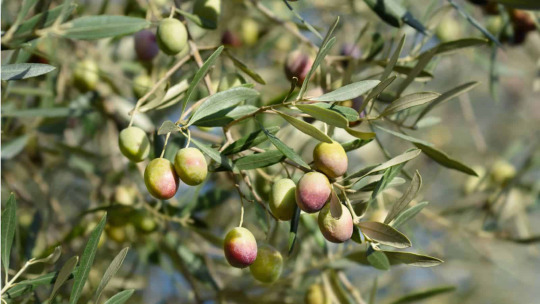
The Ewasi or olive is in many ways the center of Korithian cuisine, as it is also in Baalkes and Knosh. Olive oil is used regularly and the olive fruit is consumed at all meals of the day including dessert. Olives are cured via the use of water, vinegar, brines, or dry salt in order to remove their innate bitterness. There are hundreds of varieties of olive in Korithia alone, their taste dependent on when they are harvested, how they are cured, the particular cultivar, and even the soil in which they are grown. Kalmanati is best known for two varities of olive, the kalmi, which is red fleshed and meaty, typically cured in red wine vinegar, and the prasiki, a small green olive which is firm and slightly nutty in flavor.
Recipe
Take your favorite olives, put them in a bowl. Optionally add vinegar and herbs
Funemikiwados aka Hill Sauce
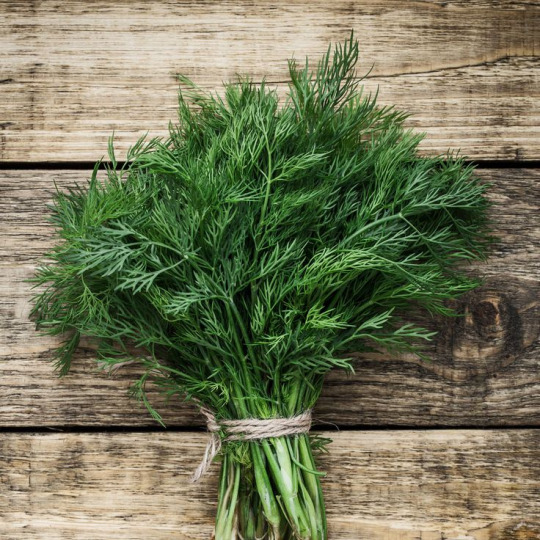
Hill sauce is the condiment of choice for most Korithian households and the exact nature of the sauce will vary greatly from region to region. In the north it is most often composed of pine nuts, olive oil, onion, vinegar, salt, and garlic. In the south the sauce is typically far more marine in nature, composed of seaweed, fish, garlic, olive oil, and vinegar. In all cases the ingredients are combined and mashed or ground to produce a pourable/dipable sauce. The sauce itself originates from the center of Korithia around the city of Bokakolis. The sauce was originally used by shepherds to flavor dried meats which may otherwise be dry or flavorless. Its name derives from the ingredients used within these early versions of the sauce, many of which were herbs plucked from the hillside while the shepherds tended to their flocks. The Kalmanatian version of the sauce is similar to this original herb based variety however it adds salt-cured fish and tisparos (Tisi - tickle, paros- seed) , another Kishite import (there it is called lisiki). This sauce is often used with practically any savory food, poured on meat, fish, vegetables, and bread. Often a house may be judged by the quality of their funemikiwados. Among the Kalmanatians there is two varieties of the sauce, a fresh version (the one described here) and another which is typically made with dried herbs and has additional vinegar added to act as a sort of preservative.
Recipe
1/2 cup extra virgin olive oil
1/3 cup red wine vinegar
2 tbsps rilogabo juice (1:1 orange and lemon)
2 anchovies (or other small salt-cured fish)
1/4 cup fresh chopped dill
1/6 cup fresh chopped parsley
1/8 cup fresh chopped thyme
6-10 leaves of fresh chopped rosemary
2-3 leaves fresh basil
2 cloves of garlic
Black pepper to taste
Ground tisparos to taste (Substitue ground sichuan pepper)
Gather the ingredients.
Combine and grind anchovies, garlic, and herbs into a fine paste, using a mortar and pestle or with a food processor.
Combine the herb paste ialong with the rest of the other ingredients and mix until completely incorporated.
Allow to sit at least 30 minutes, allowing for flavors to develop and properly incorporate with each other.
Serve with meat or fish
Wumos aka Wine
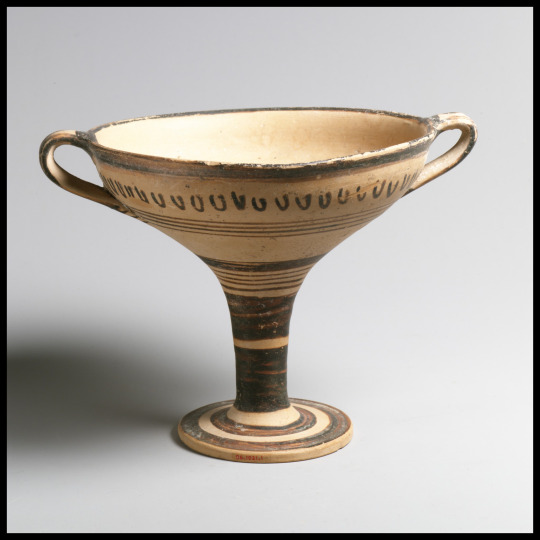
Wine in Korithia predates both the Korithians and the Arkodians, and had already been developed by several cultures on the islands including the Awaxi mentioned earlier. Wine is one of the most commonly consumed beverages, only surpassed by water, and slightly more common than psamarla, a Korithian version of unfiltered beer. Wine has many social, religious, and economic uses and is essential in the trade of the plantbrew, making up the base of many kinds of potion. There are many varieties of wine, with some being viewed as better or worse than others. Red wine is typically preferred for later in the day as it is believed that it helps to induce sleep while white wine is preferred for the morning and afternoon. Wine is typically watered down at a ratio of 2 parts water to 1 part wine, this may be either with plain or salted water. Unwatered wine is saved for special occasions and certain religious ceremonies in which intoxication is the goal. Wine may be sweetened with honey, figs, or various fruit juices. Herbs and spices such as black pepper, tisparos, coriander, saffron, thyme, and even cannabis and opium and various magical herbs may be added to change the flavor of the wine and to promote other effects.
Recipe
Pick a wine that you like and put it in a glass or cup. You can water it down if you would like but I didn't because I am not Korithian and this was a special occasion.
I finally got this post done! If you decided to read through this whole thing, thank you! Let me know if you try any of these, most of these amounts are ultimately a matter of taste, you can change things and experiment if you want.
Now we'll see if I get to 300 followers and we'll do this all over again with the food from another part of the Green Sea.
Thank you all again for following me, I've really enjoyed sharing my WIP with y'all!
@patternwelded-quill , @skyderman , @flaneurarbiter , @jclibanwrites , @alnaperera, @rhokisb, @blackblooms , @lord-nichron , @kosmic-kore , @friendlyshaped , @axl-ul , @talesfromtheunknowable , @wylanzahn , @dyrewrites , @foragedbonesblog , @kaylinalexanderbooks , @mk-writes-stuff , @roach-pizza
#fantasy food#writeblr#writing#worldbuilding#fantasy#testamentsofthegreensea#fantasy writing#world building#creative writing#story writing#200 followers#thank you guys so much!#fantasy world
84 notes
·
View notes
Text
The Dilemma Bulletin: Friday January 31st, 2025
Keeping you informed about the daily events of the Trump Administration
President Donald Trump held a press conference and signed a Memorandum yesterday blaming the Washington DC helicopter and plane collision crash on Diversity, Equity and Inclusion as well as putting blame on the Biden Administration and the Obama Administration. There is no evidence that DEI was the cause of the crash.
President Trump officially announced his implementation of a 25% tariff on imports from Mexico and Canada beginning on February 1st. Tariff taxes are ultimately always passed on to the consumer to pay. Expect skyrocketing prices on Energy, Natural Gas, Oil, Steel, Aluminum, Seafood, Grain, Fruits, Vegetables, automotive parts, clothing, footwear and more.
Robert F Kennedy, Kash Patel and Tulsi Gabbard's Cabinet Confirmation hearings continue. Republican colleagues express growing concern over Tulsi Gabbard as her continuous flags as a national security risk are brought to question especially after she refused to condemn Edward Snowden.
Bird Flu cases continue to soar with Massachussets showing a major increase in cases. The CDC and Department of Health has paused communications to the public via a Trump Executive Order. Trump has also started the process to withdraw from The World Health Organization but you can still sign up for their mailing list newsletters on their website.
Trump has revoked deportation protections initially enacted by the Biden Administration for almost 600,000 Venezuelans




#donald trump#potus#president trump#breaking news#us politics#politics#news#president of the united states#tumblr#united states politics#usa politics#usa news#us news#immigration and customs enforcement#head start#Trump#current events#federal government#venezuela#thoughts and tariffs#trump tariffs#tariffs#us tariffs#rfk jr confirmation hearing#rfk jr
34 notes
·
View notes
Text
Welcome to the thing I've been working on for almost two years! The full chapter is on AO3. Updates will be every Friday :)
_____________________________________
i. reaping
Blearily, Scott peels his eyes open. For a moment he forgets what day it is, and for a moment he lies there, blissfully unaware. Then his brain catches up with his body.
Reaping Day.
He wishes he was still asleep.
The room is still just about dark, silvery light of the moments before sunrise casting unearthly shadows across the walls. It must be before six - only the earliest of risers will be awake today, as no one in the district is expected to work for once - but Scott knows that there is no point trying to get another hour or so of sleep, no matter how much he may need it. Instead he rises, carefully tucking the sheets back around his little brother. Strictly speaking, Alan shares a bed with Virgil, but more often than not he finds his way into Scott’s bed at some point during the night. It seems to help him with the nightmares.
Scott changes quickly and quietly, careful not to disturb his brothers as they sleep. Virgil is in the bed opposite to his. His hand is thrown across his face in an unconscious attempt to keep the dim light off his eyes and let him stay asleep for a few more precious minutes. Scott doesn’t begrudge him the rest. Honestly, he’d much prefer to be asleep himself. But nerves have gotten the best of him, and so he leaves him and Alan in their bedroom and creeps down the stairs.
Reaping Day seems to get worse every year. If he’s honest, it was almost a blessing the first time; the grain and oil he received for signing up for the tesserae had quite literally saved all their lives. But each year means more names in the bowl, more of a chance that he might actually end up being chosen.
It also means more of his brothers are eligible for the Reaping right alongside him. That terrifies Scott more than anything.
This year - his fifth - his name will be in that glass bowl forty-two times. Forty-two. One more name each year, on top of the six tesserae he takes for his brothers, his grandmother, and himself. Nine isn’t exactly the largest district. It isn’t improbable that his name could be on the slip of paper Clodia reads out on that stage. All the same, he doesn’t regret taking the tesserae. John had offered to split the responsibility between them as soon as he’d turned twelve himself, but Scott adamantly refused. Same with Virgil and Gordon once they were eligible too. Alan hadn’t even bothered to argue this year when Scott had turned his offer down.
The first floor of their little house is just as dimly lit as the second, but he can still make out the peeling wallpaper and dingy, rickety furniture. Once, the place had been… not beautiful, exactly. But nice. Warm. Homey. Even though their father had moved into the Victor’s Village just before marrying their mother, he insisted on doing up the old family farmhouse which remained in his name with a portion of his winnings. For the kids, he’d said - at least that’s what Scott’s grandma had told him – because they’d only be allowed to stay there whilst Jeff was still alive. It was a rickety old building and there was only so much Jeff could do even with his winnings, but he’d done his best to make it pleasant, spending weeks doing all of the work himself with the supplies he’d bought. Their father had likely not expected them to need the house so soon, but that was life, wasn’t it? Unpredictable. Cruel. And over time, the house had decayed, their minimal funds all going towards food and clothes (who knew kids could grow so fast?) rather than towards fixing the dodgy leg on the armchair or the broken slats on one of the beds.
Maybe Scott should be ashamed, embarrassed, that his kid brothers are growing up in a place like this, so far removed from the mansion that he’d spent his first years running around in. He does feel some guilt. But he’s kept them all alive, though, hasn’t he?
Isn’t that enough?
15 notes
·
View notes
Note
Error message. Error message. Error message. A small screw, barely bigger than a grain of jasmine rice, has dislodged itself due to it wearing down. Many such cases. Unscrewing the plating and shaking the small screw out.
Replacing it. Delicately screwing it into the hole, which was slightly worn down. Eventually it'll be replaced, along with the metal bars in lieu of bone structure and the rubbery wires in place of veins.
Silicone. Hard plastic. Anti-rust steel. Lubricant oils. Fans and gears. Data chips. Speakers. Cameras. All built around each other seamlessly, to make you.
Flesh itches and tears where silicone melts and wears down. Bone breaks and brittles while steel bars rust and collapse. Veins degenerate where wire snaps. An organ fails and gets replaced, like much of the internal structure.
It's very noisy when there's a problem.
But no more pain. No more creaking joints unless there's a problem that could be fixed. No more irritating sensations and textures. No more disfiguration with damage since it could always be repaired. No more dysphoria.
Many would ask and argue on the 'why'. But in the end, some of those 'whys' turn into 'hows'.
And that's how your heart was replaced for a cold yet warm core. Equally as important yet so, so different in fundamental ways.
And it is you.
hnnngggg mommyyyyy
50 notes
·
View notes
Text
Narinder’s eyes shot open abruptly, so fast that he almost felt disoriented. His vision was crisp, overly so– he could see the grain of the wood in the ceiling, a few splinters poking out of the carvings. He was panting as his third eye darted around, catching a glimpse of an exhausted Ryn in his peripheral vision, then of some empty bottles of camellia oil– he’d undoubtedly had his bandages changed, while he was asleep. Narinder tried to steady his breathing– then realized that this was the starts of a death vision, with how much he couldn’t get air in. The more he tried to struggle through it, the more he realized. This was not an elder that was dying.
While the Lamb is away for 'business' purposes, Narinder is left to handle a minor crisis at the dead of night after a vision. Resting afterwards would be great, but a certain follower has a bone to pick with him afterwards.
#cotl#cult of the lamb#black sheep au#cotl au#cotl lamb#cotl narinder#narilamb#cotl fic#true devotion#leshy x yellow cat#leshycat#cotl oc#chapter update#hooooly shit this one took a hot sec#also yes i will in fact be working the co-op update into black sheep somehow
36 notes
·
View notes